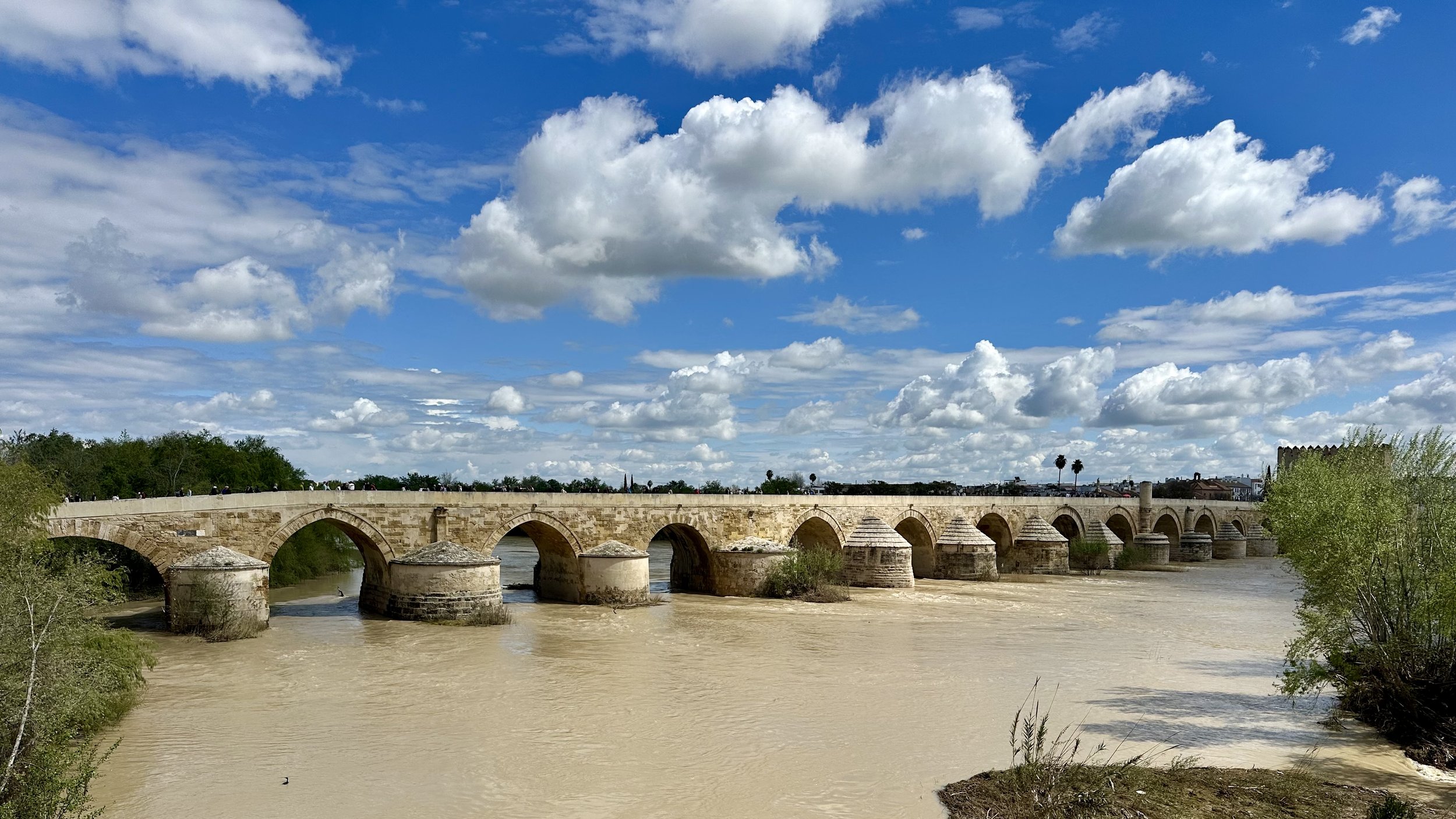Córdoba - Day 2
It was great to have an extra day to walk and wander around historic Córdoba. We started with breakfast at a little spot that served “the best pancakes in town.” Then we walked through a different part of the city, past the stately Palau de la Merced (Mrcy Palace) and the fountain in the Plaza de Colon (Columbus Square).
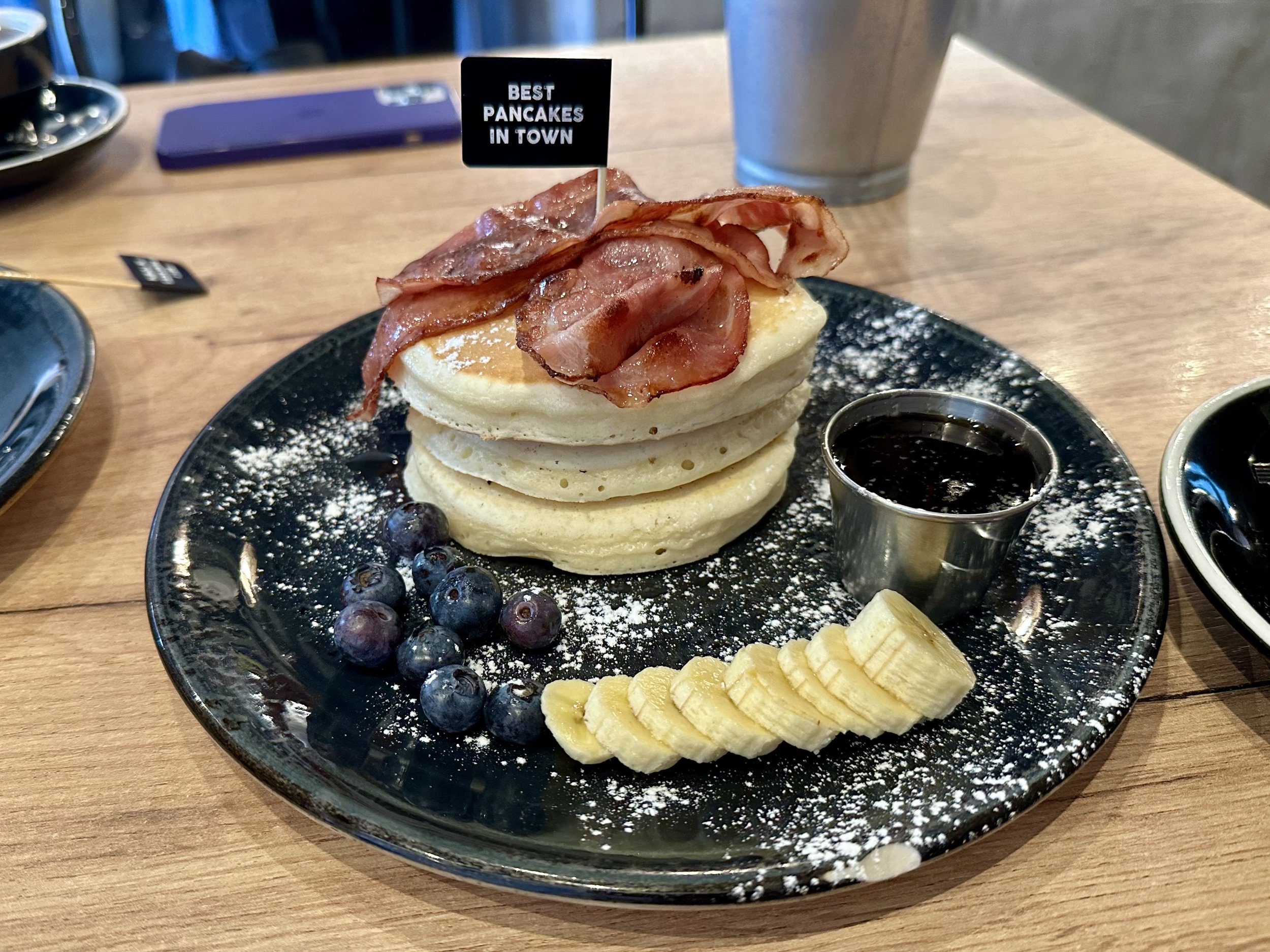
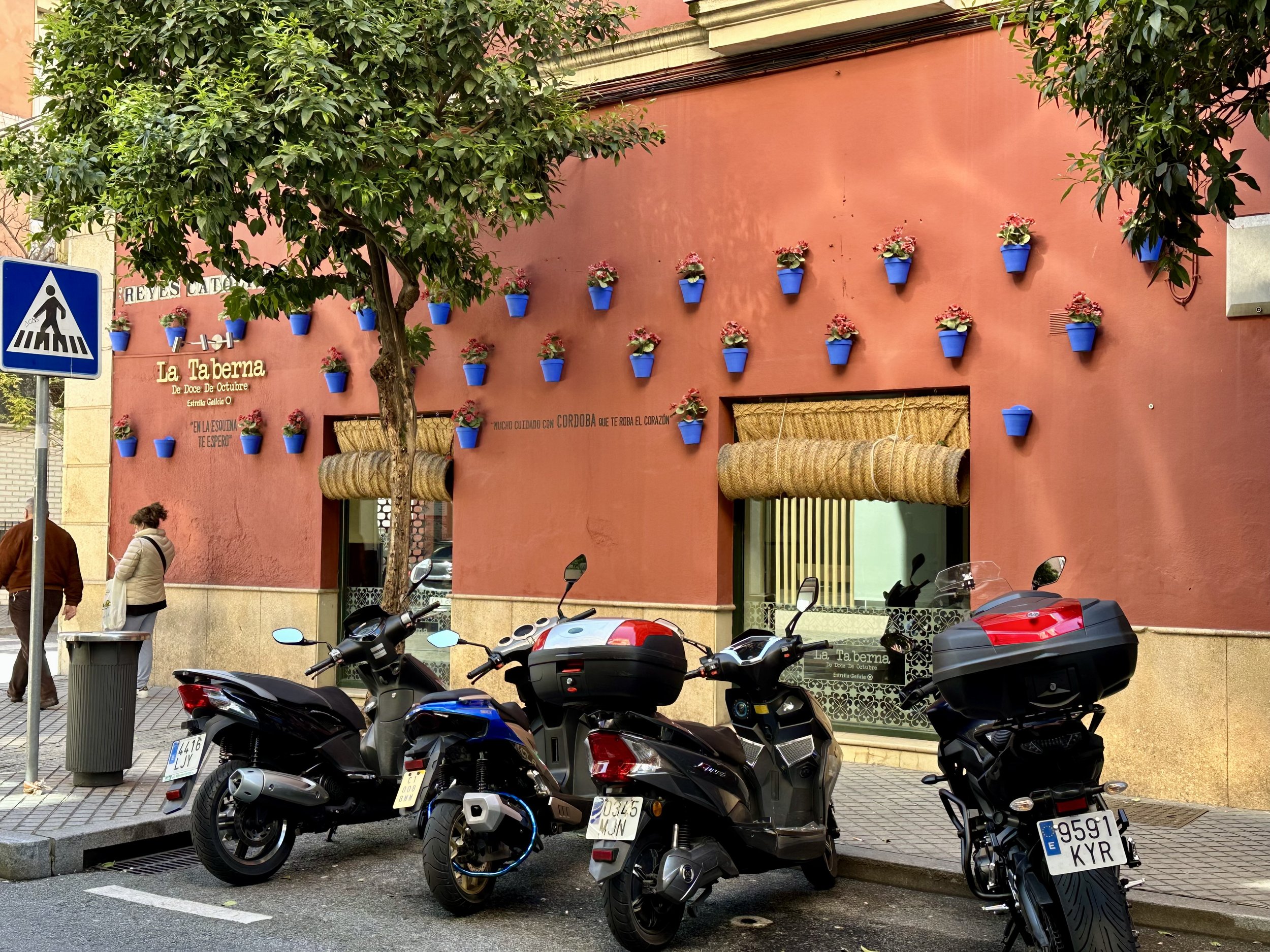

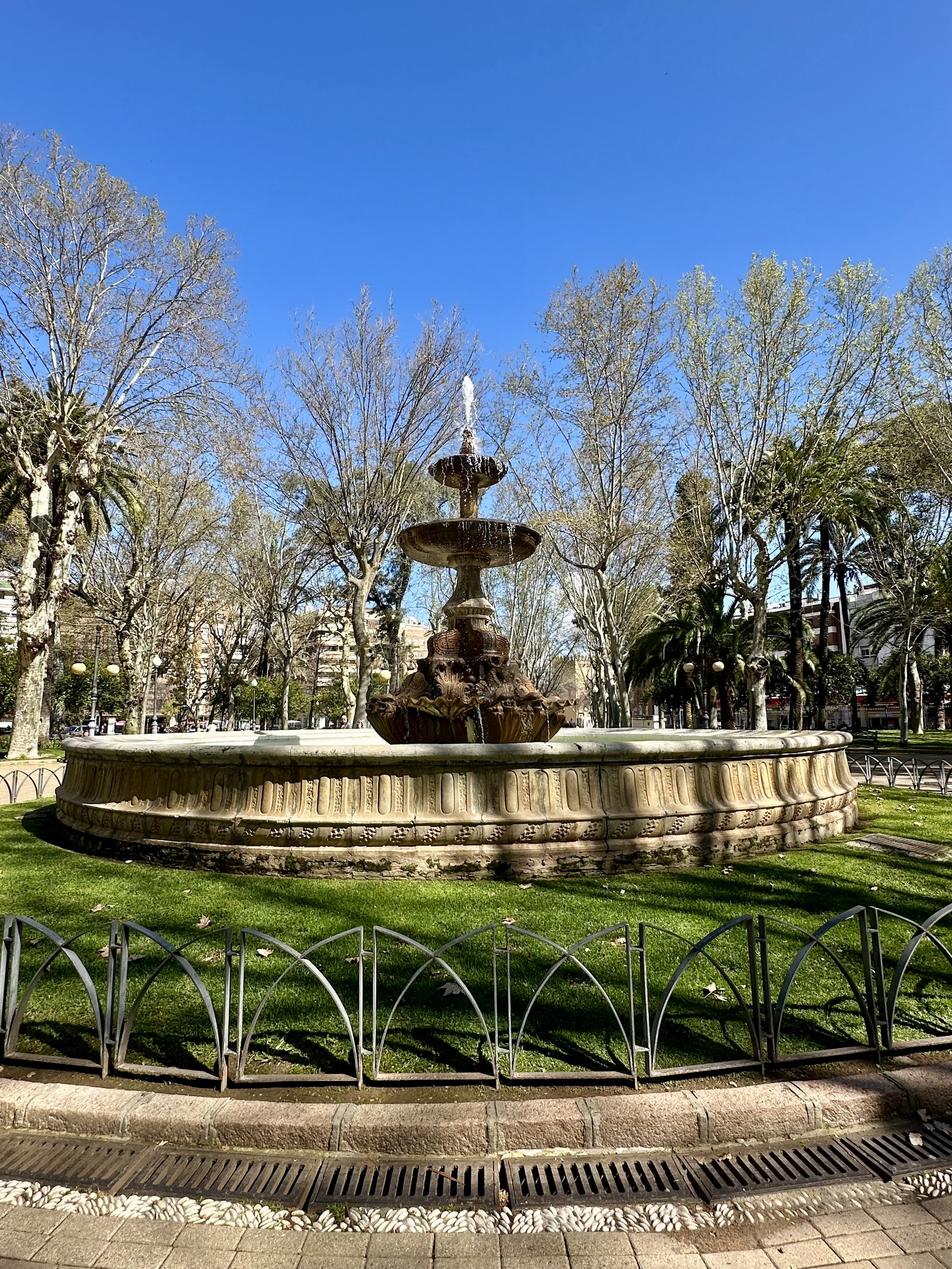
Córdoba is famous for its decorative patios (courtyards). Each year in May, there is a festival in which the courtyards compete for awards and are open to the public. Since it wasn’t yet festival time, we decided to visit Palacio de Viana, a historic manor with more than ten courtyards. From 1425 to 1980, Palacio de Viana was inhabited by families who expanded and transformed it into a complex of interconnected houses and courtyards. Although it was too early in the year for many flowers, the courtyards were beautiful. Cypresses were sculpted into a giant crown, and orange trees had been trained to climb walls. There were bubbling fountains, shady galleries, and ceramic tiles with poetry. From some of the courtyards, we could peek into the rooms and imagine living there.
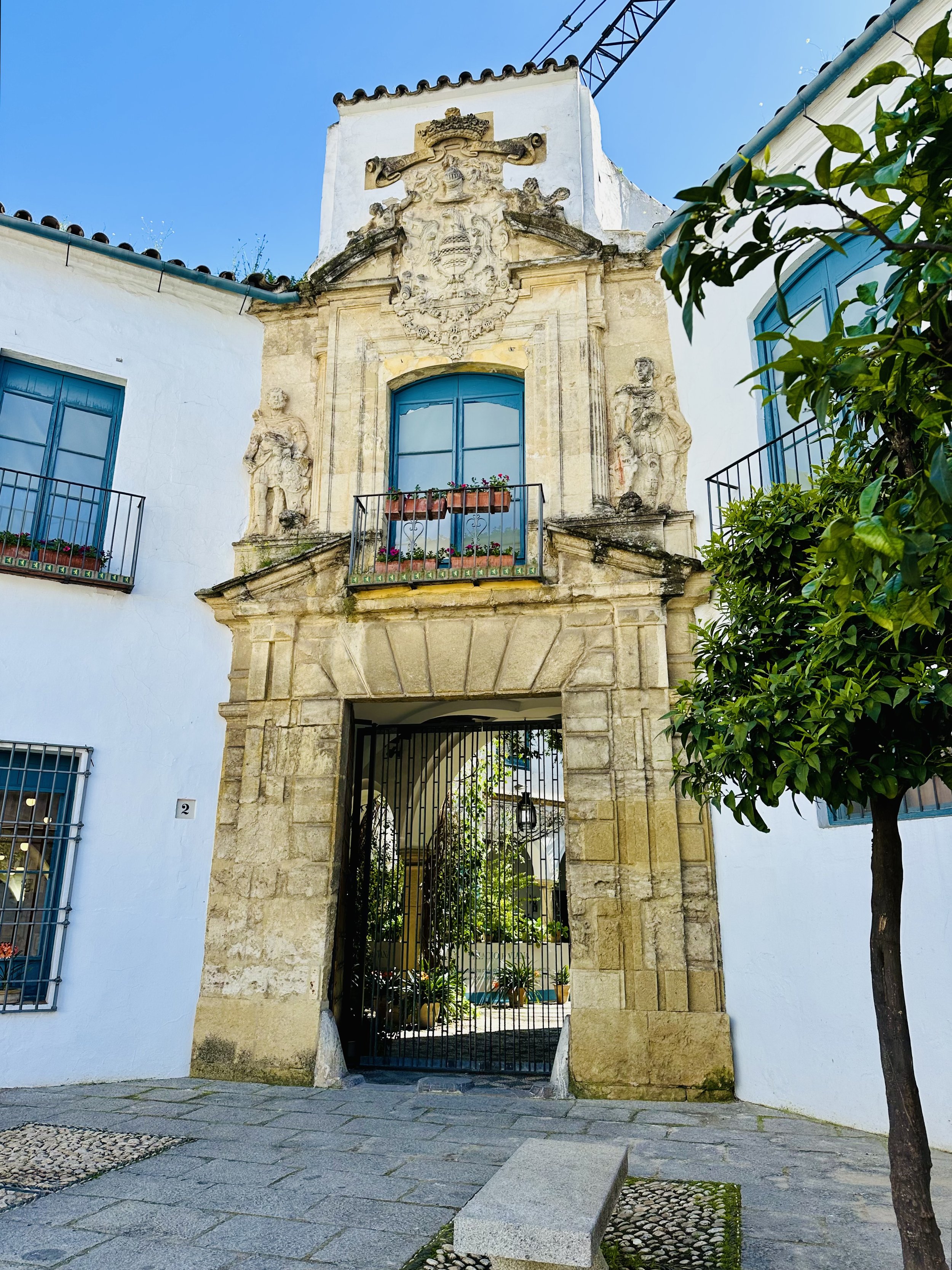
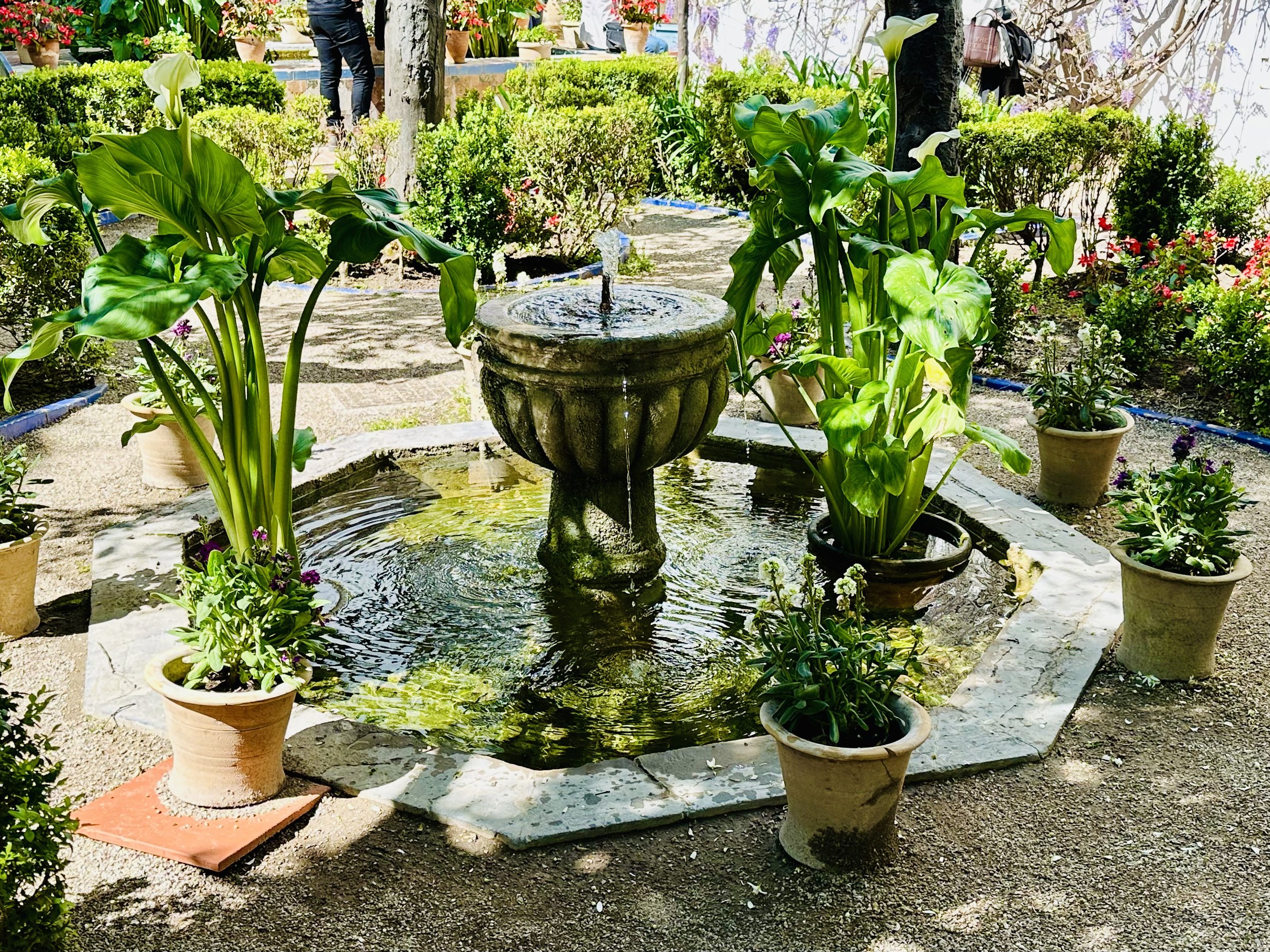
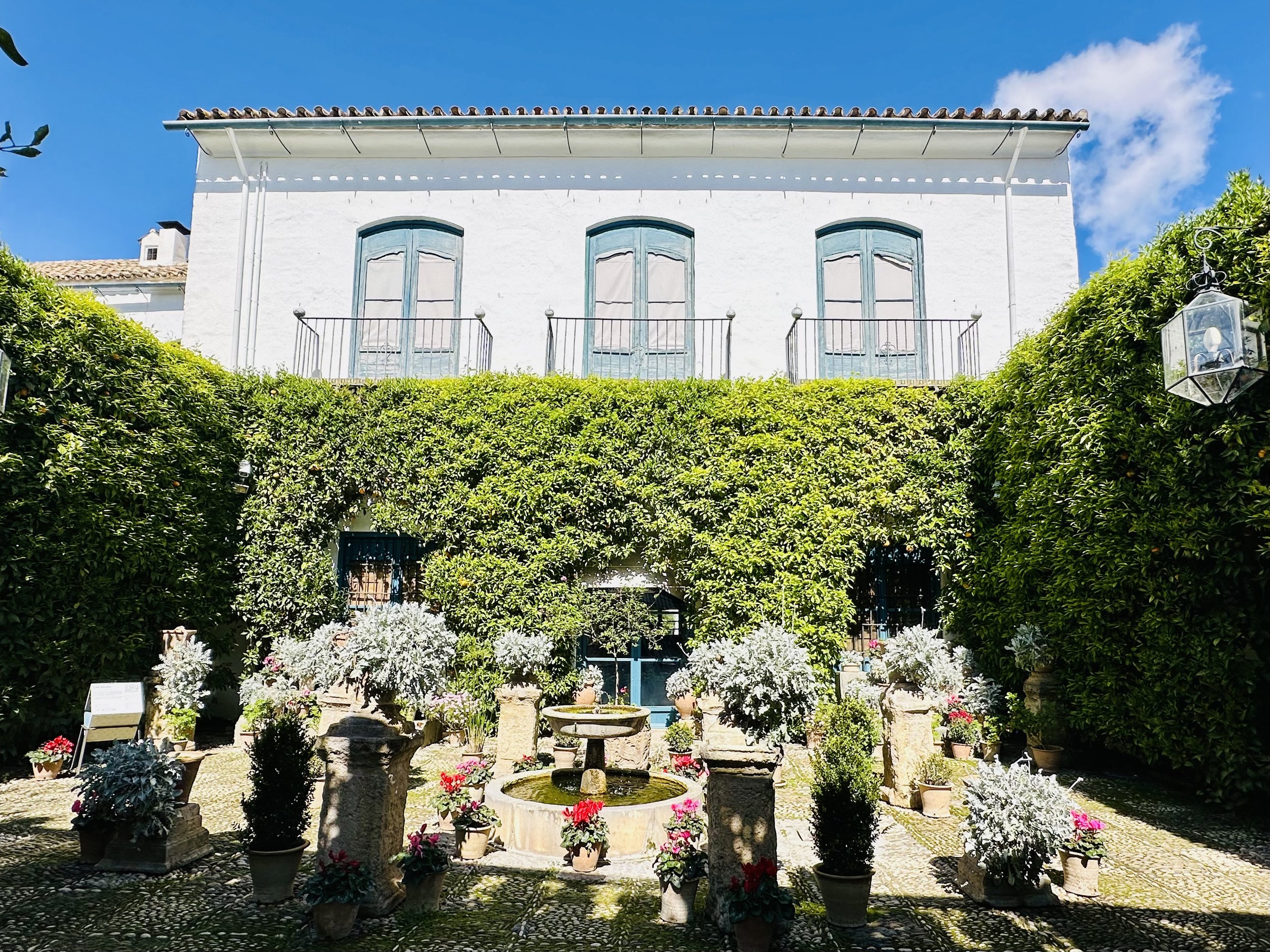
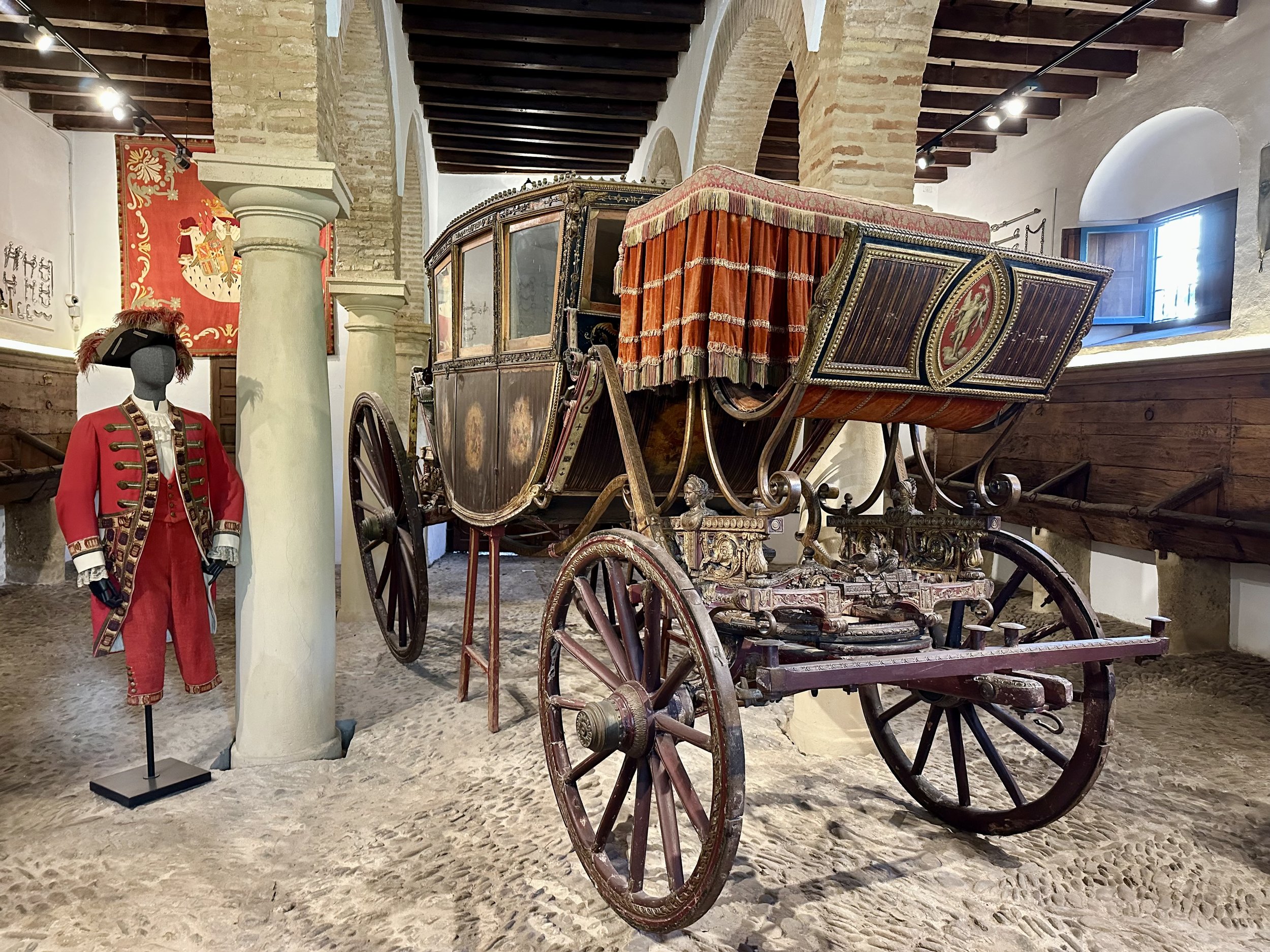
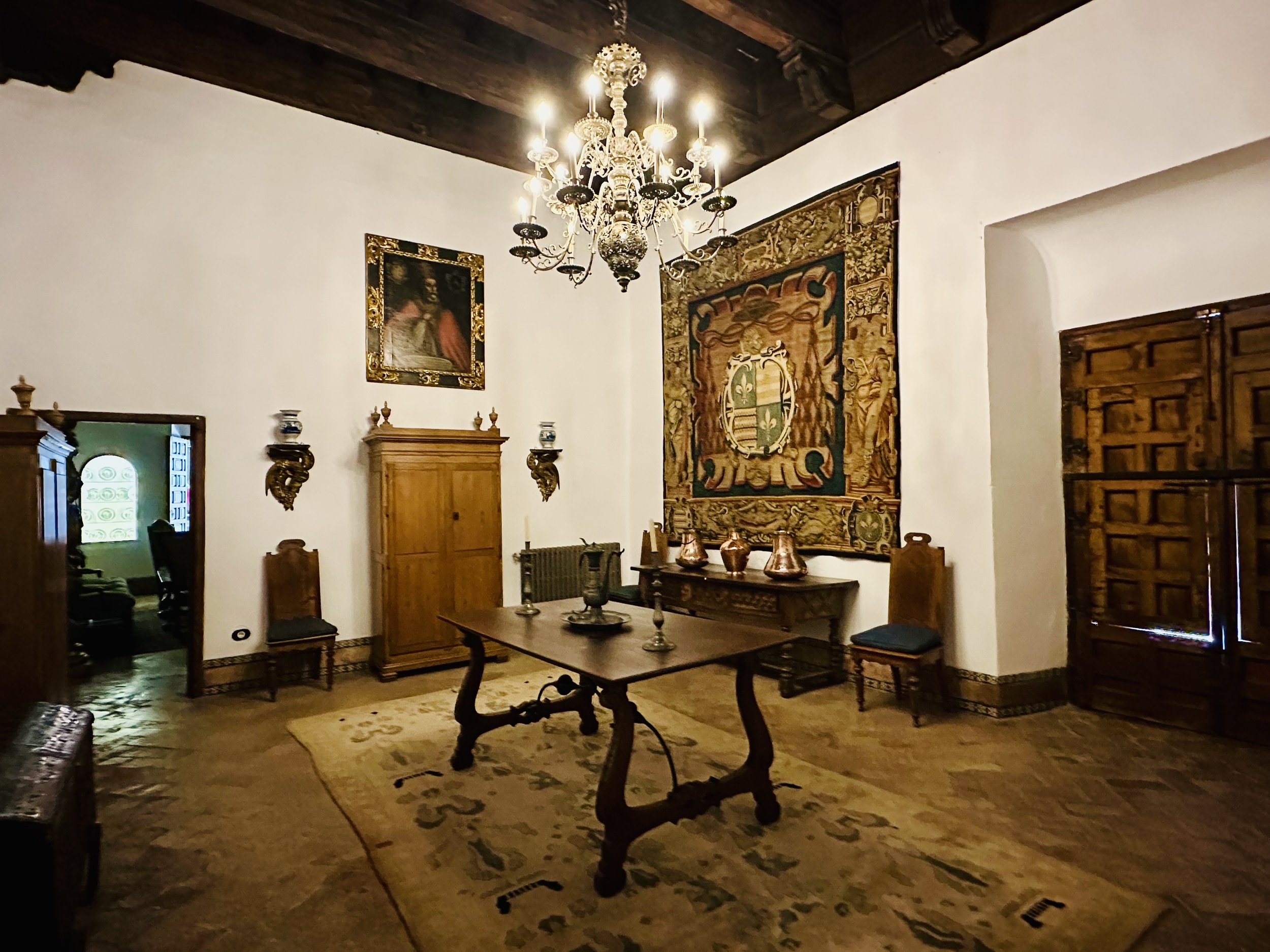

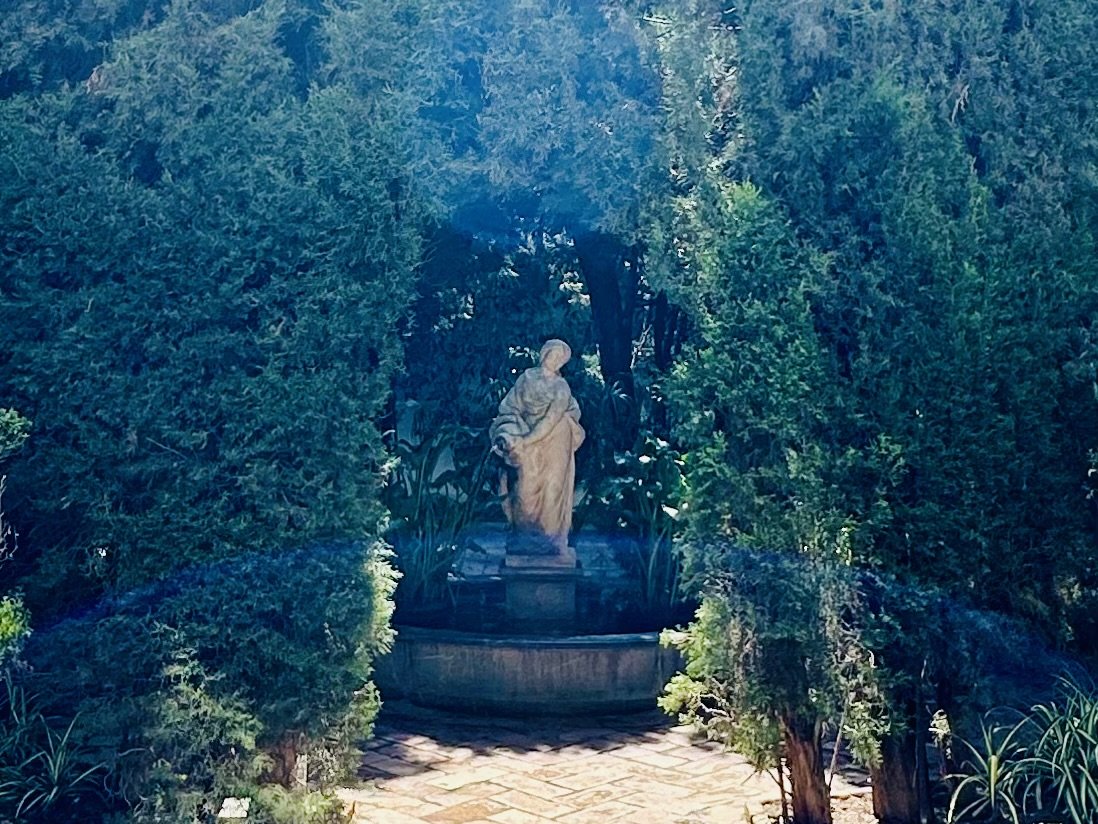
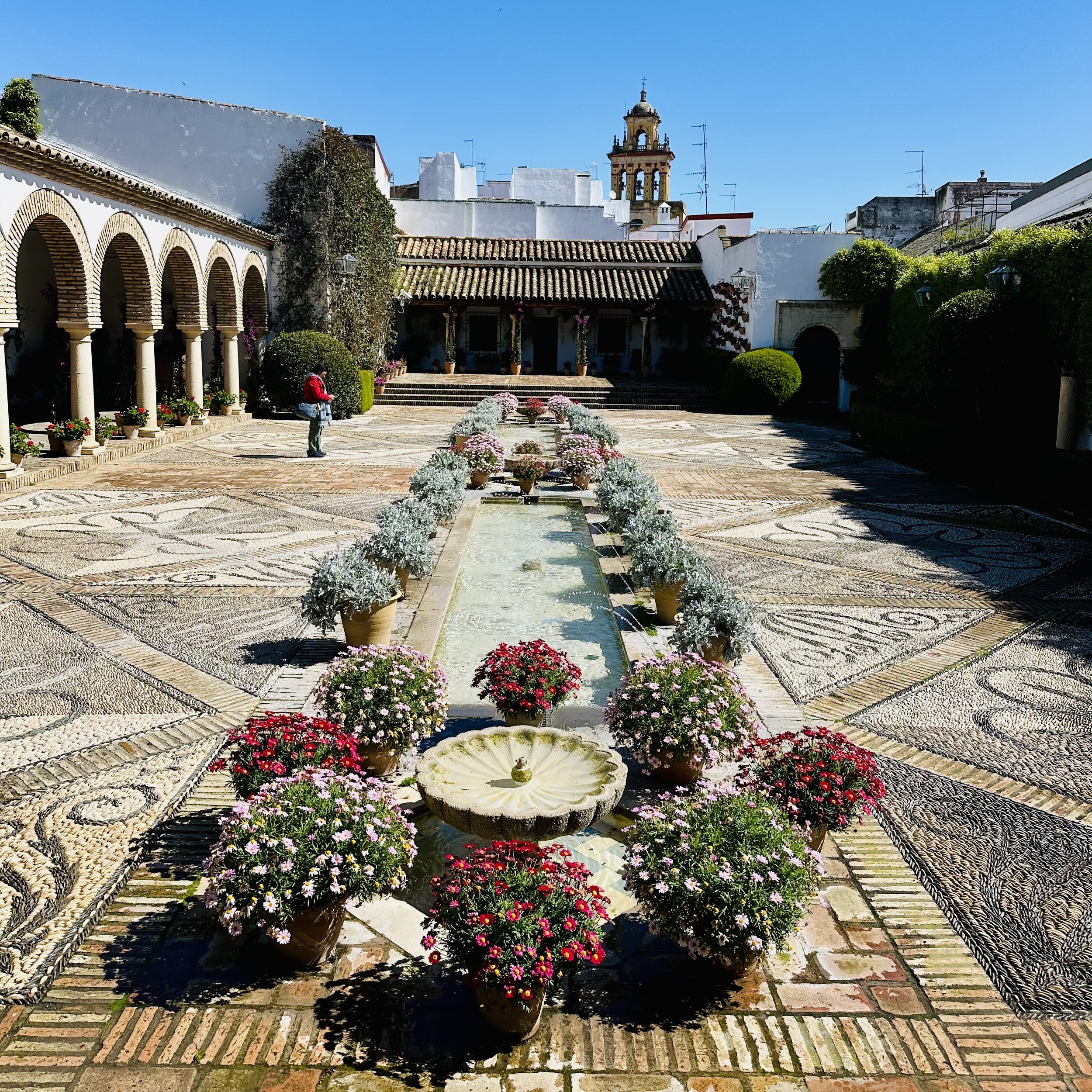

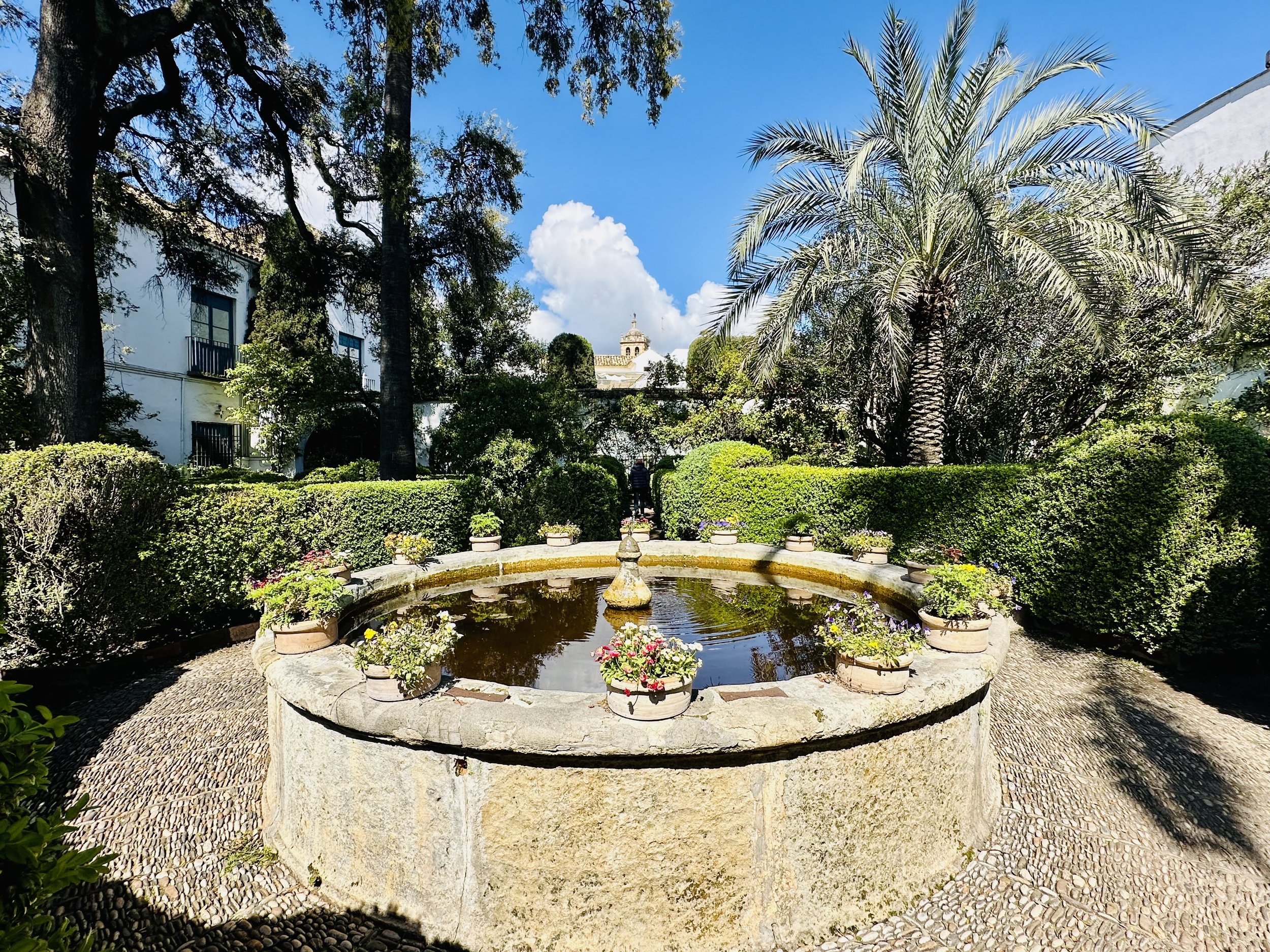
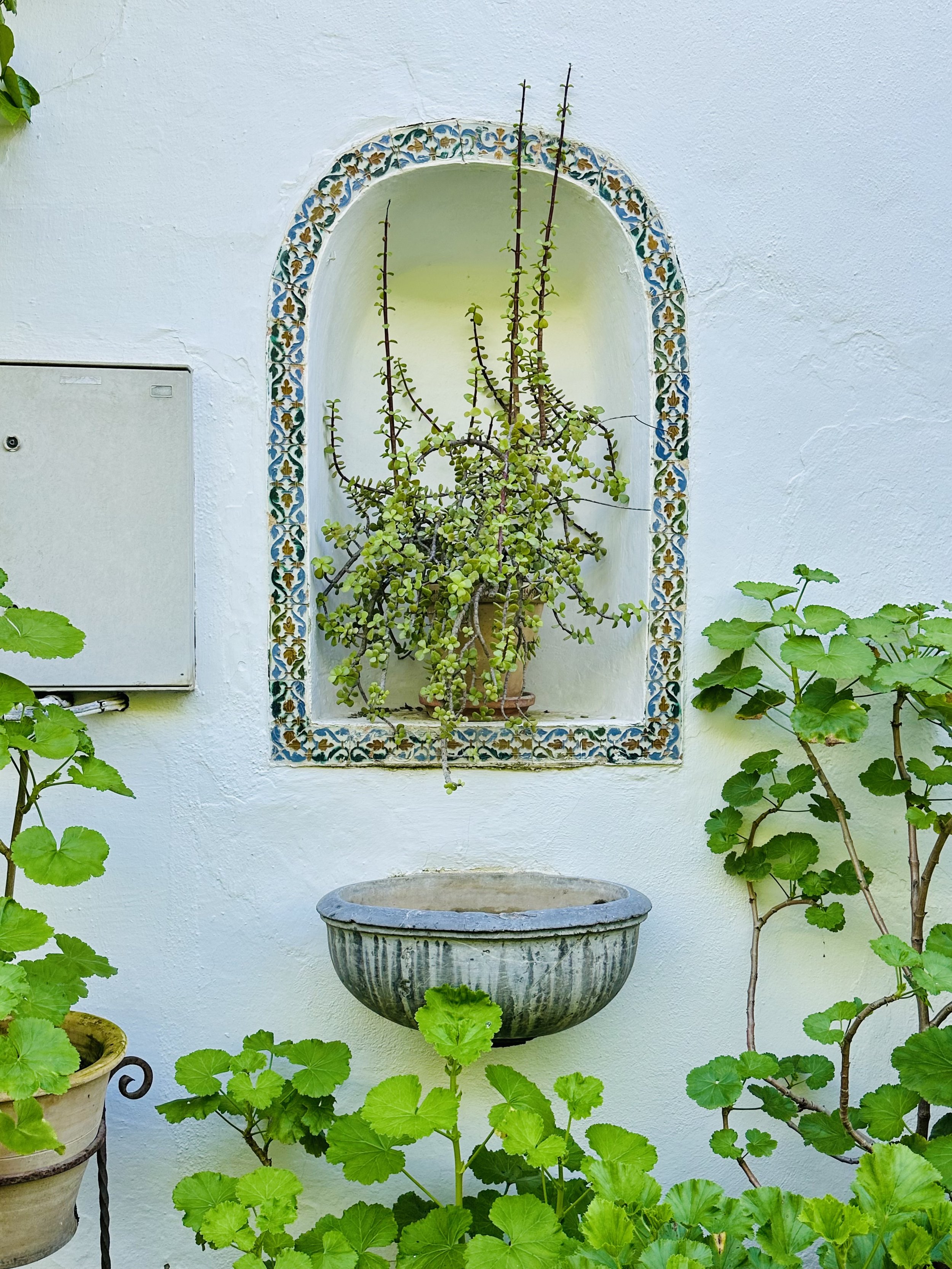
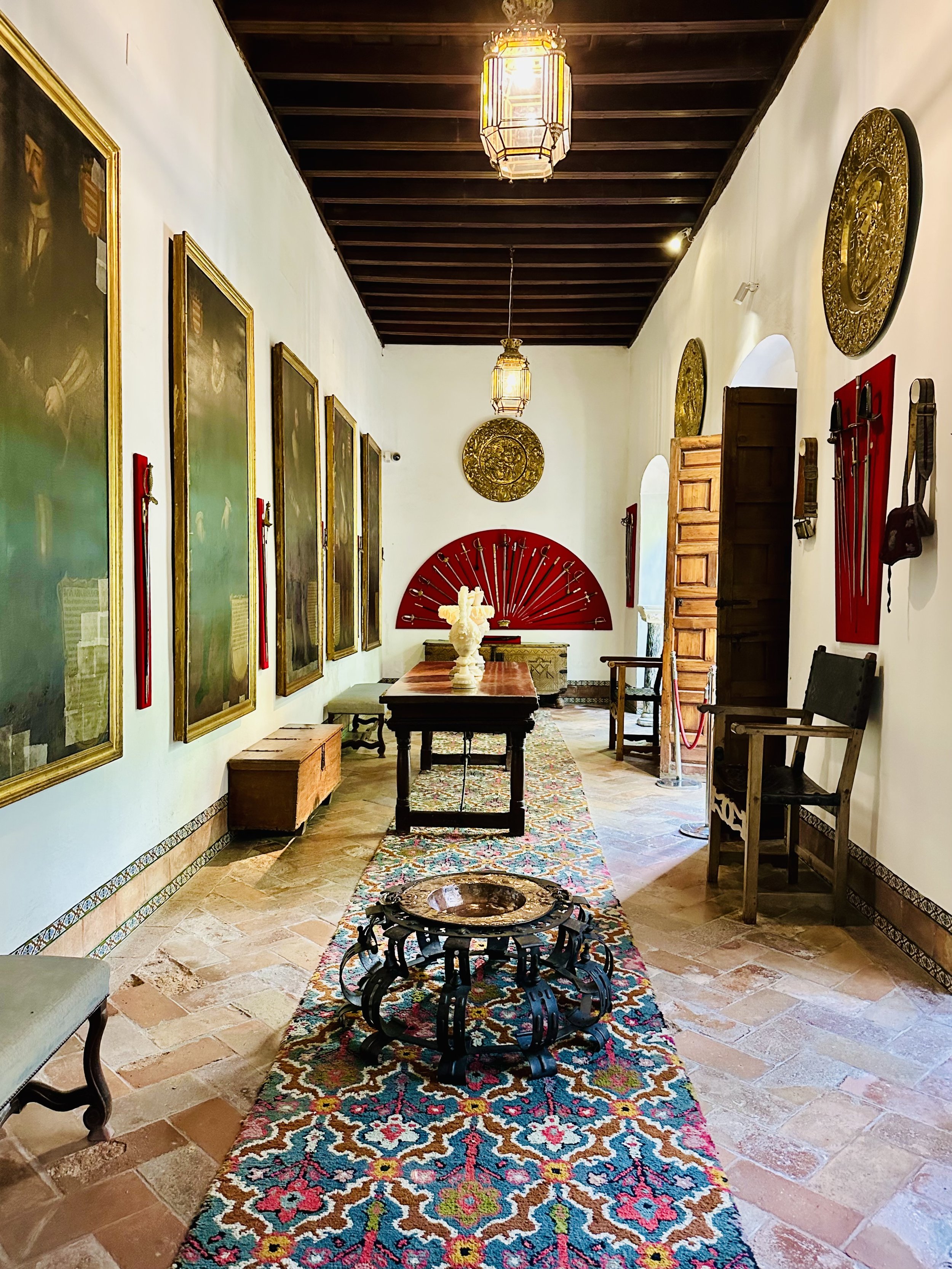
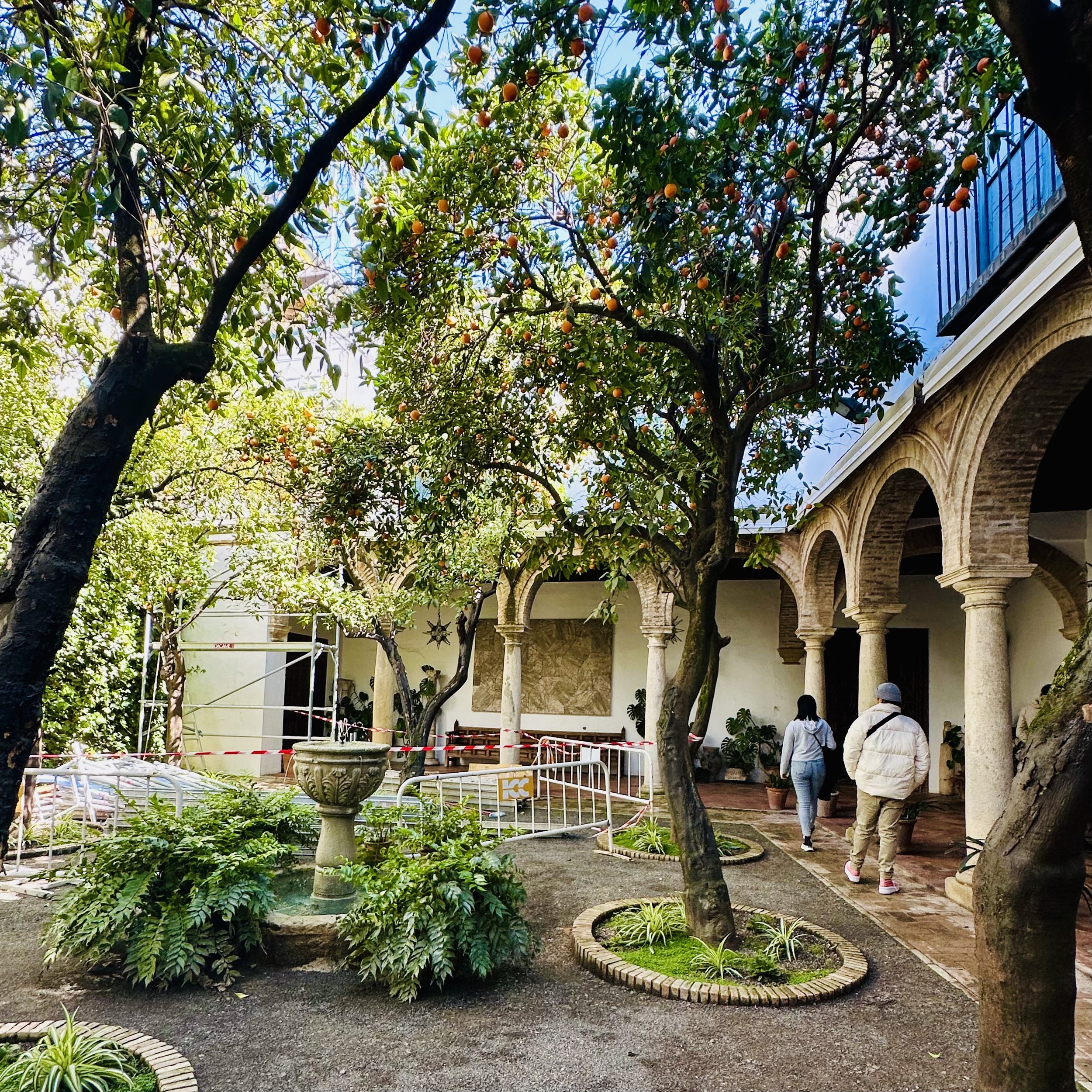
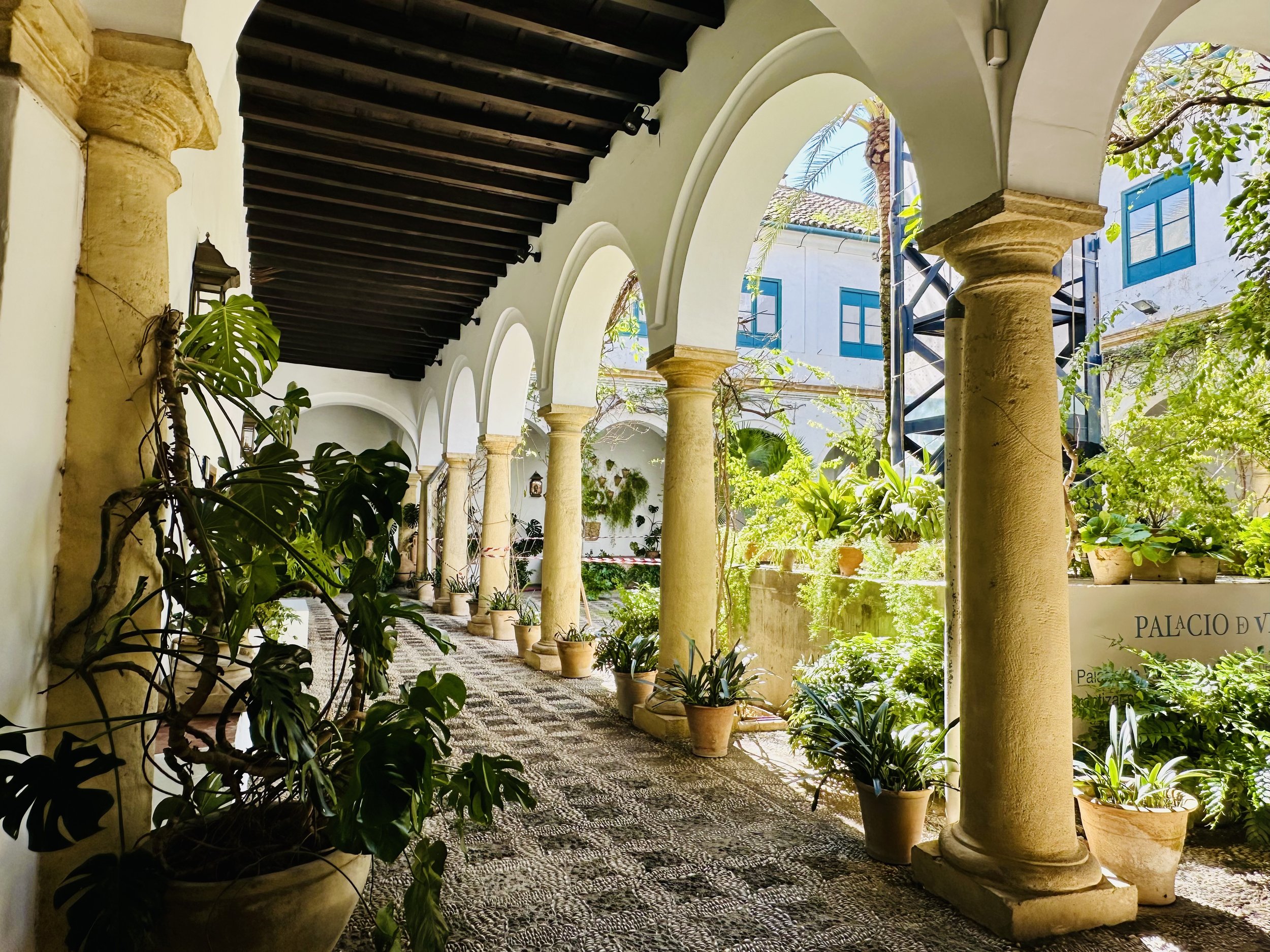
Just around the corner, we stopped to visit one of the “Fernandine” churches, Igesia Santa Marina. In the 13th century, King Ferdinand III of Castile ordered about a dozen churches to be built throughout Córdoba, to establish order and spread the Christian faith. Santa Marina was an austere Gothic style church. In one corner was a silver trono, which in just a few weeks would be used to carry statues from the church in procession for Semana Santa (Holy Week). (Admission to the Fernandine churches is included with a ticket to the Mosque-Cathedral.)
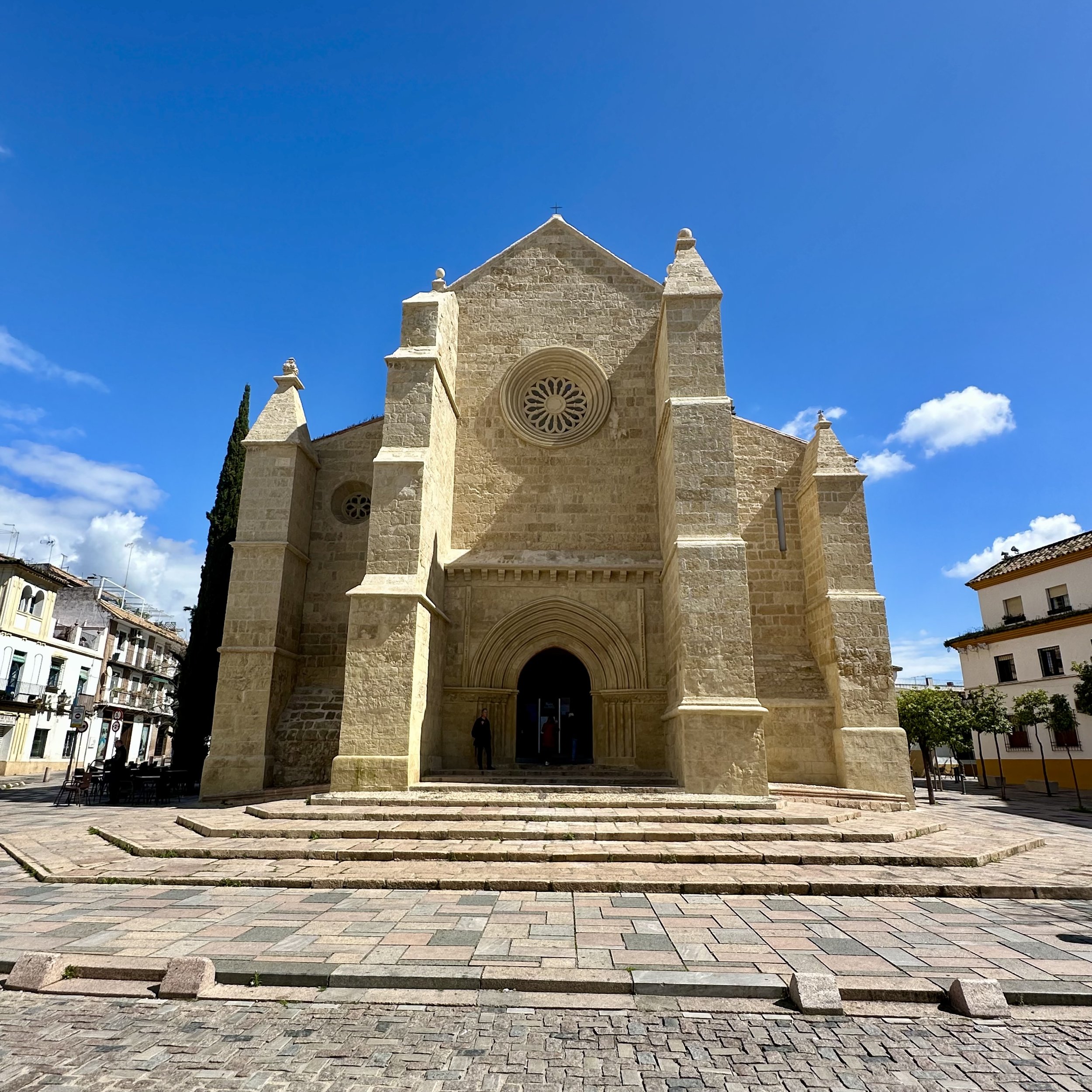
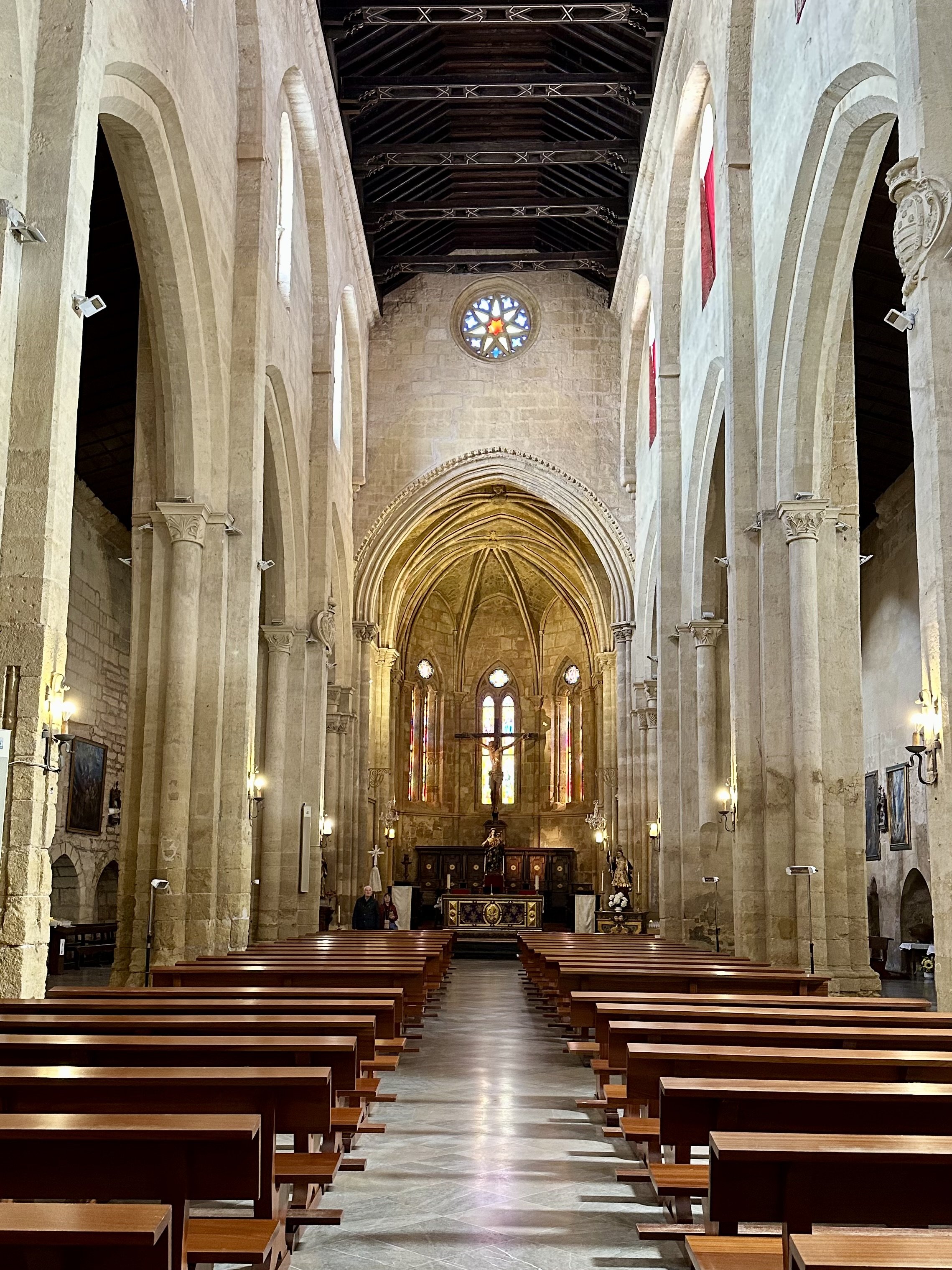

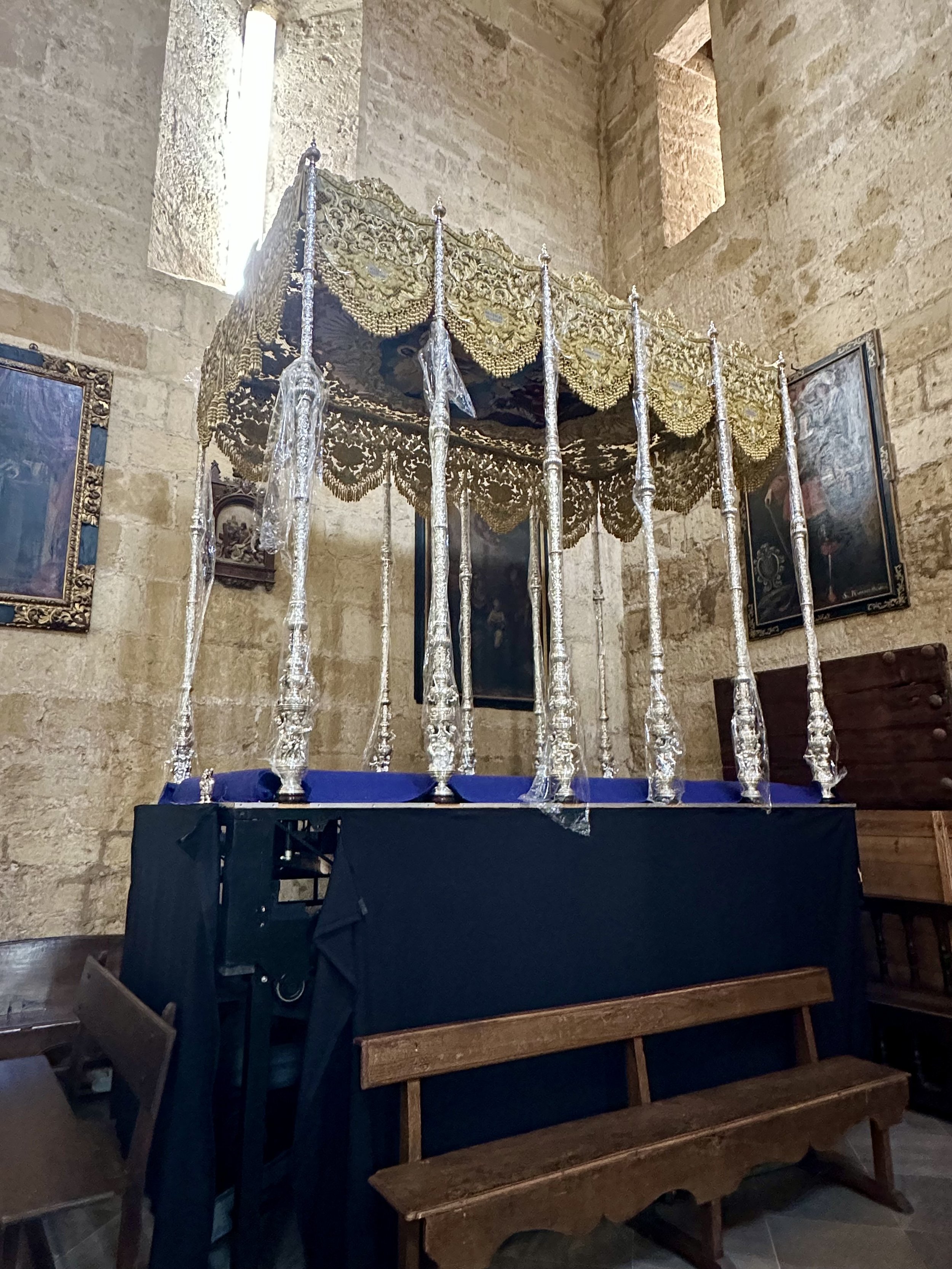
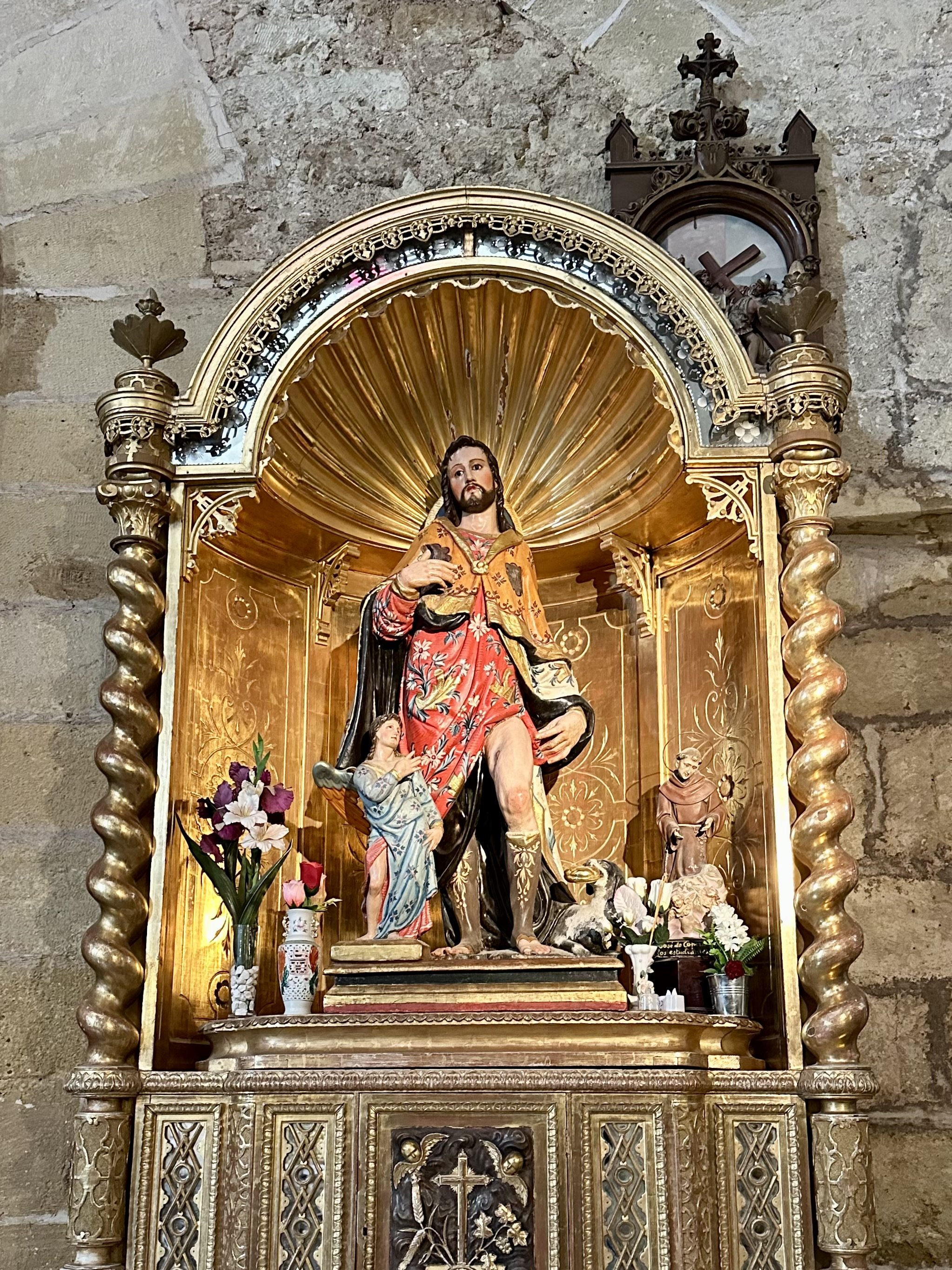
We left the church and walked back to the historic center, past a monument to toreadors (many famous bullfighters were born in this neighborhood). We encountered more old churches and more walls with flowerpots. Córdoba had plenty of both!

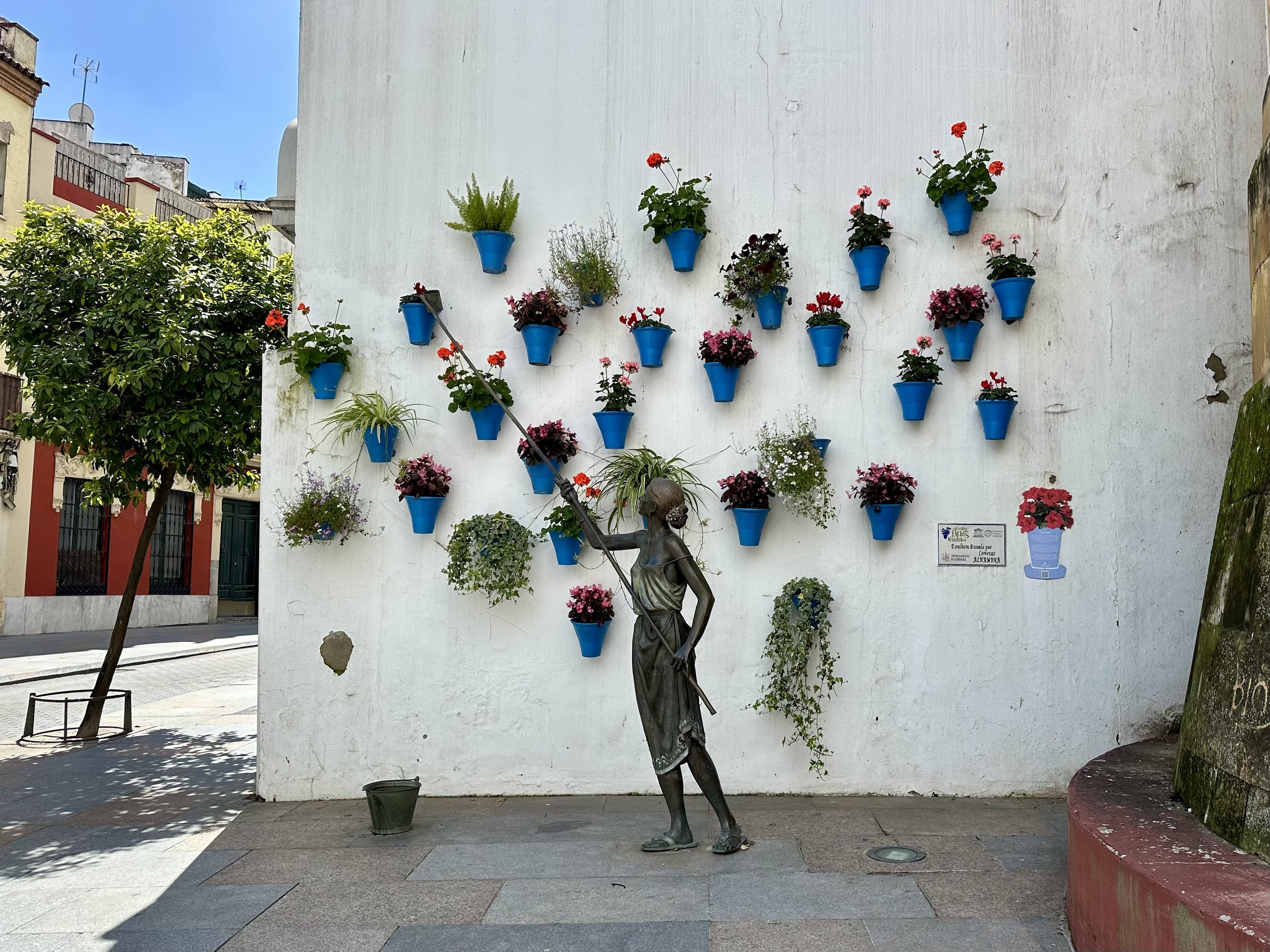
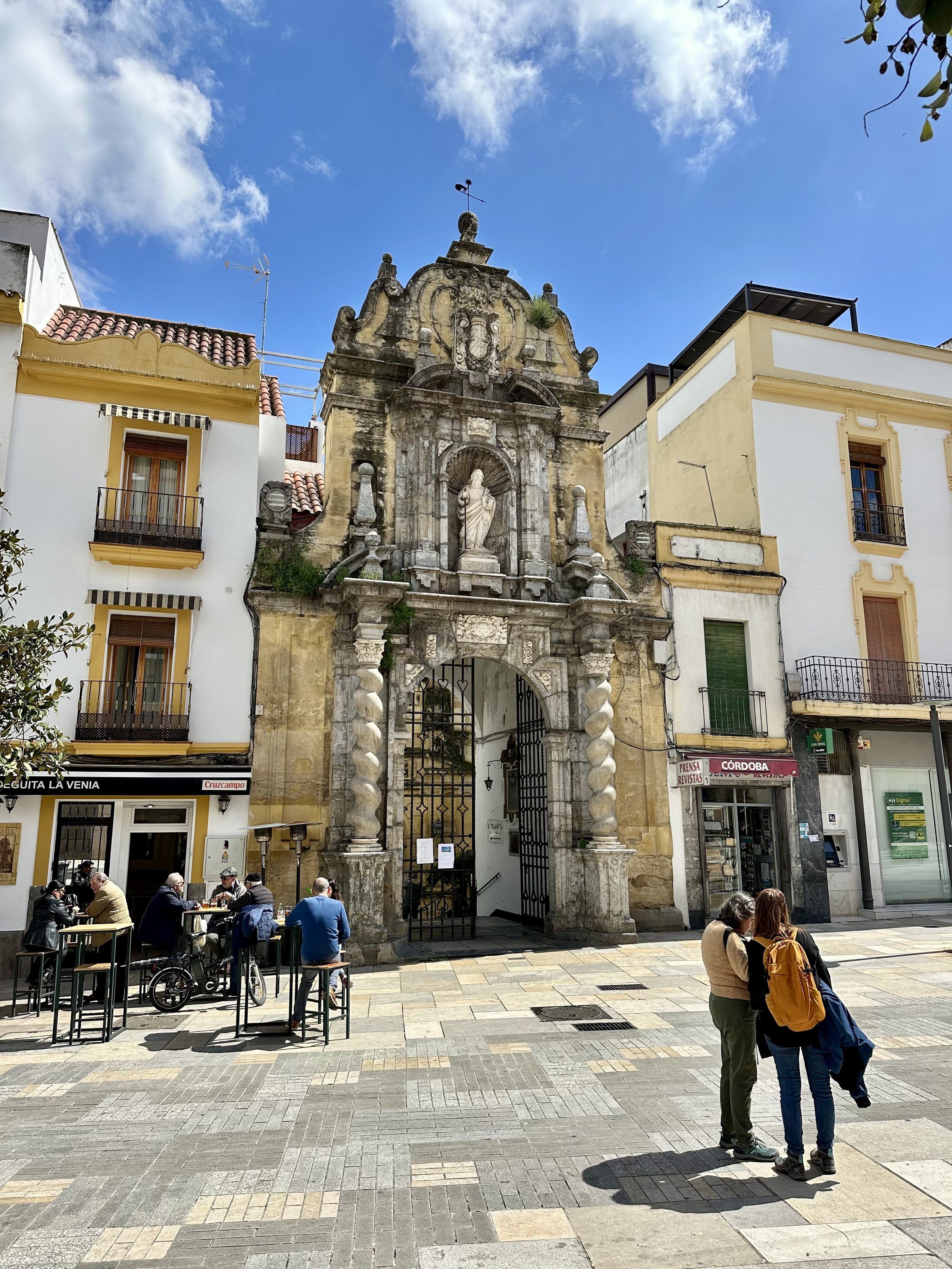

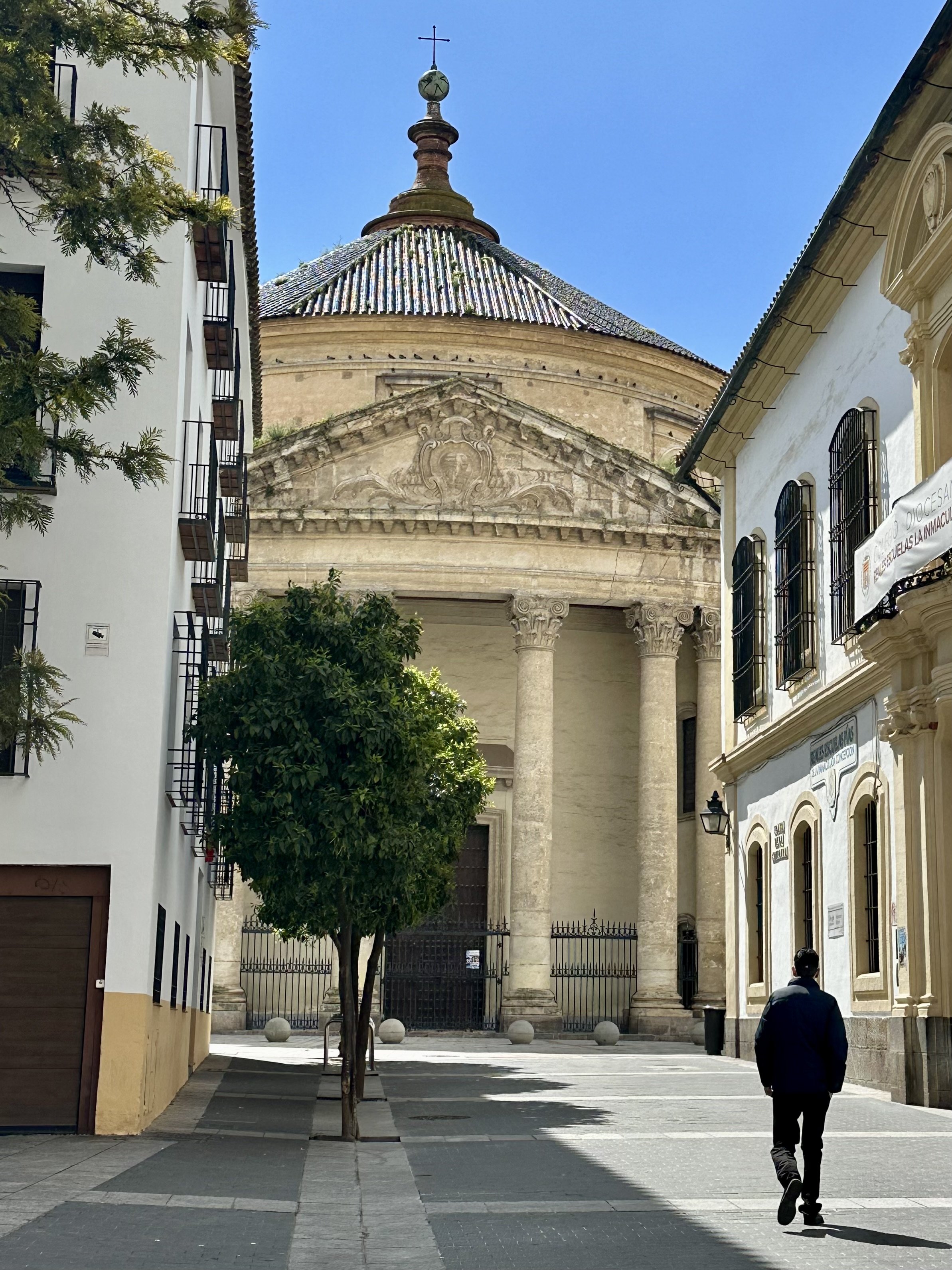
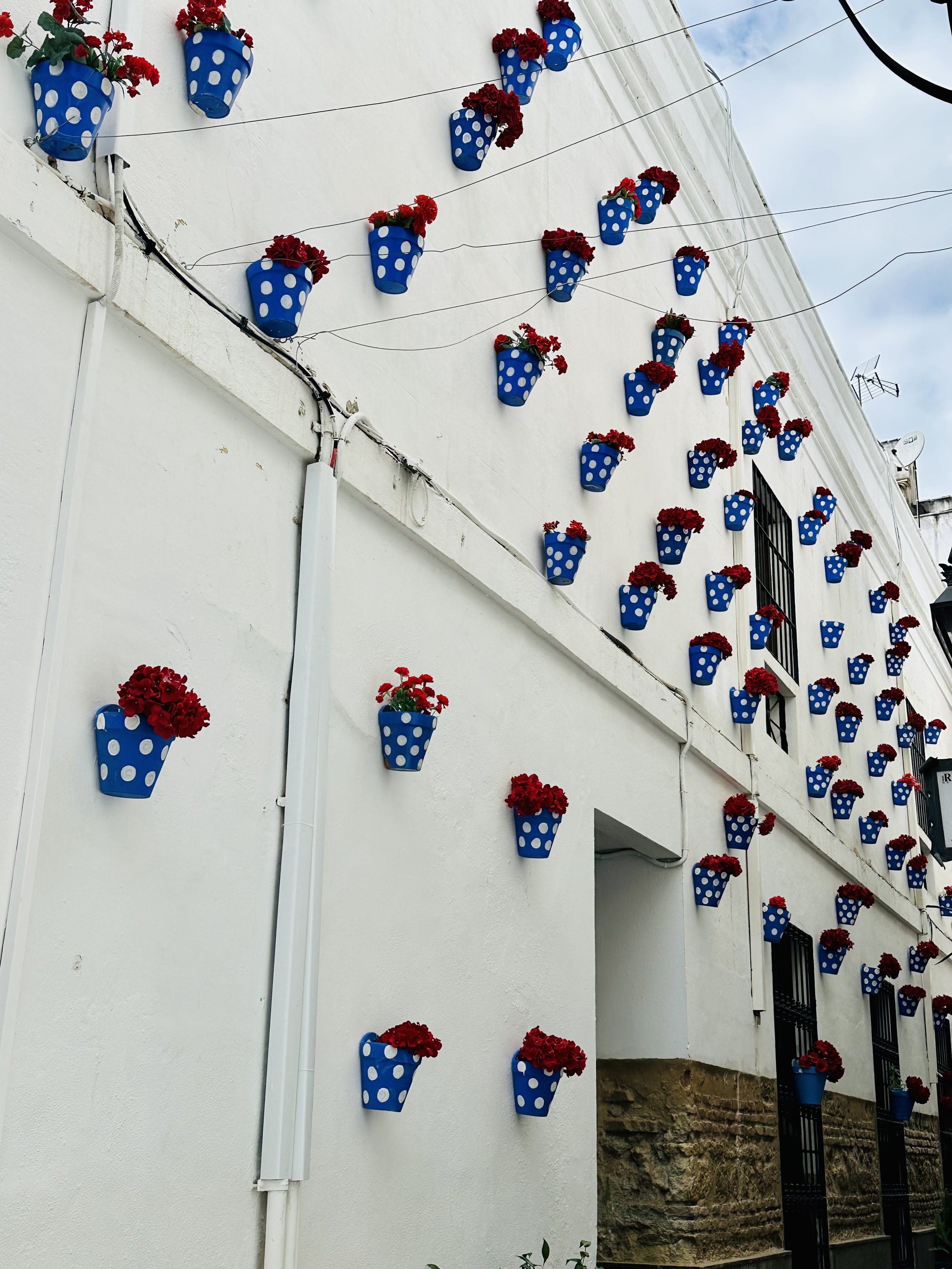
Back in the Jewish Quarter, we stopped to see the Chapel of Saint Bartolomé. There was a small courtyard with a large palm tree, its roots encased with a stone lattice. At one side was the chapel, built 1390-1410 as a funeral chapel. It was just one room, perhaps the size of an average bedroom, with a vaulted ceiling of stone. But what a room it was! The walls were covered with Mudéjar decorations of many different styles, colors, and materials. There were ceramic tile mosaics, intricate woodwork, and lace-like plasterwork. The patterns were sophisticated, and the colors were jewel-like. The chapel was exquisite.
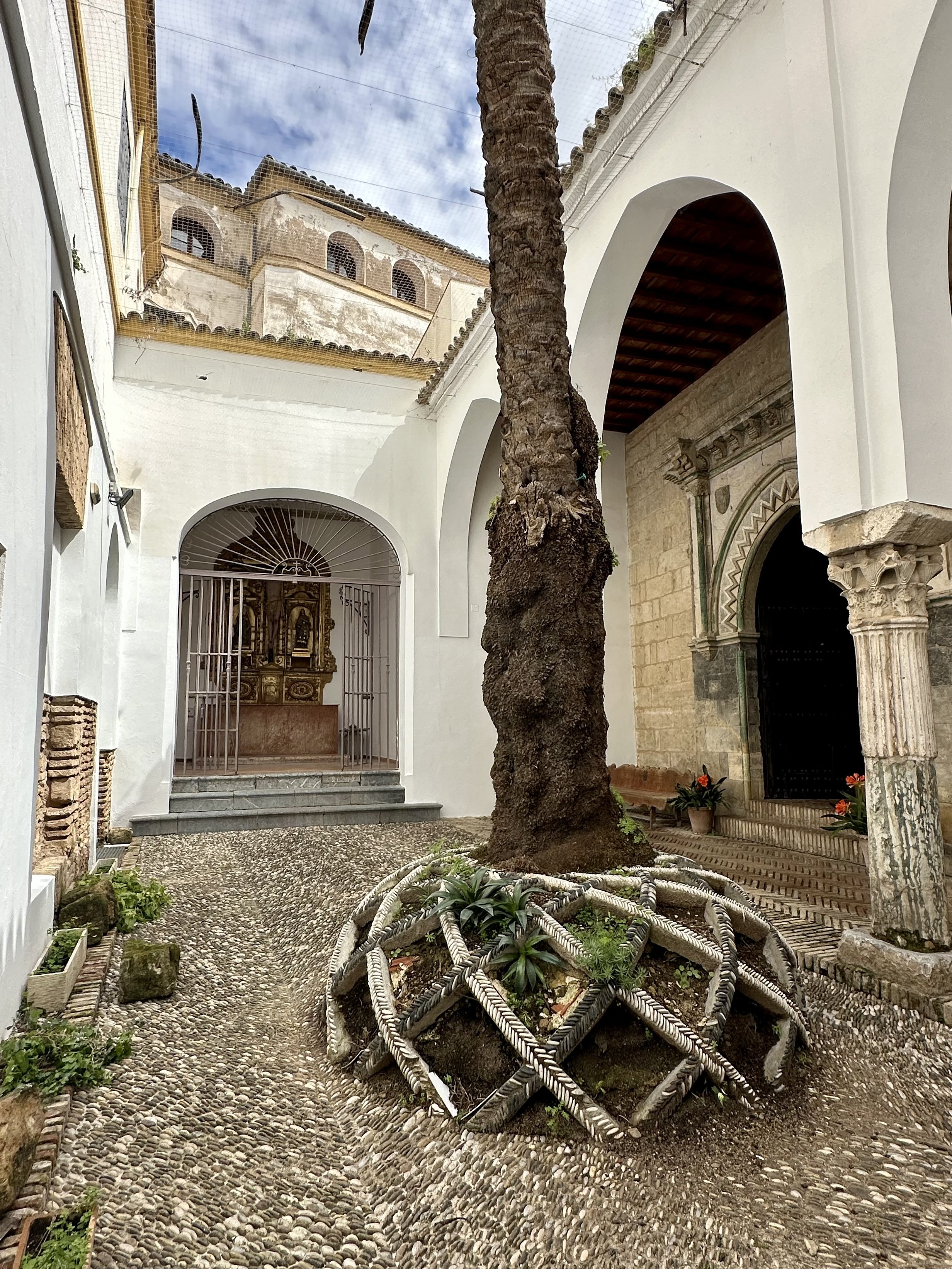
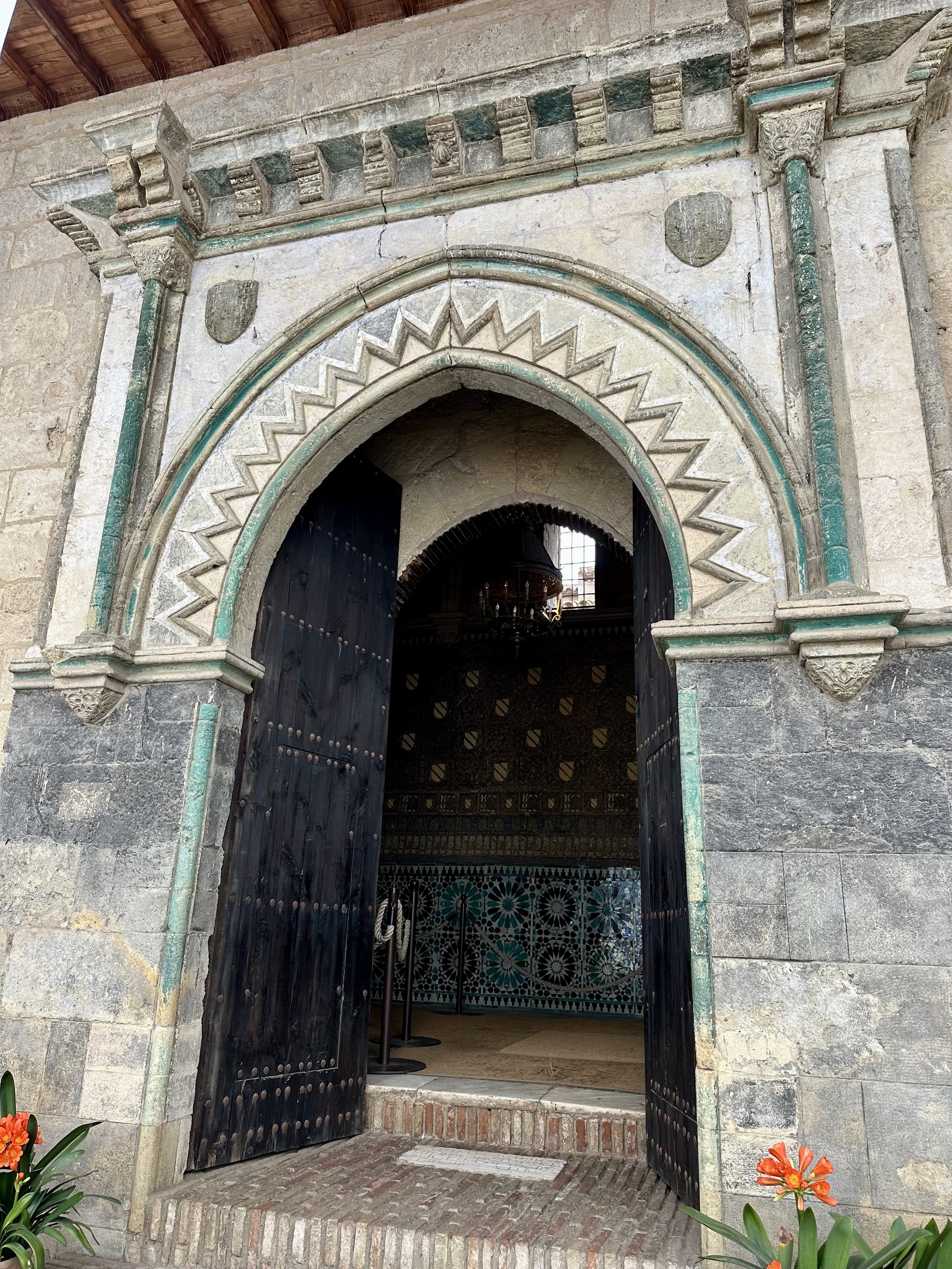
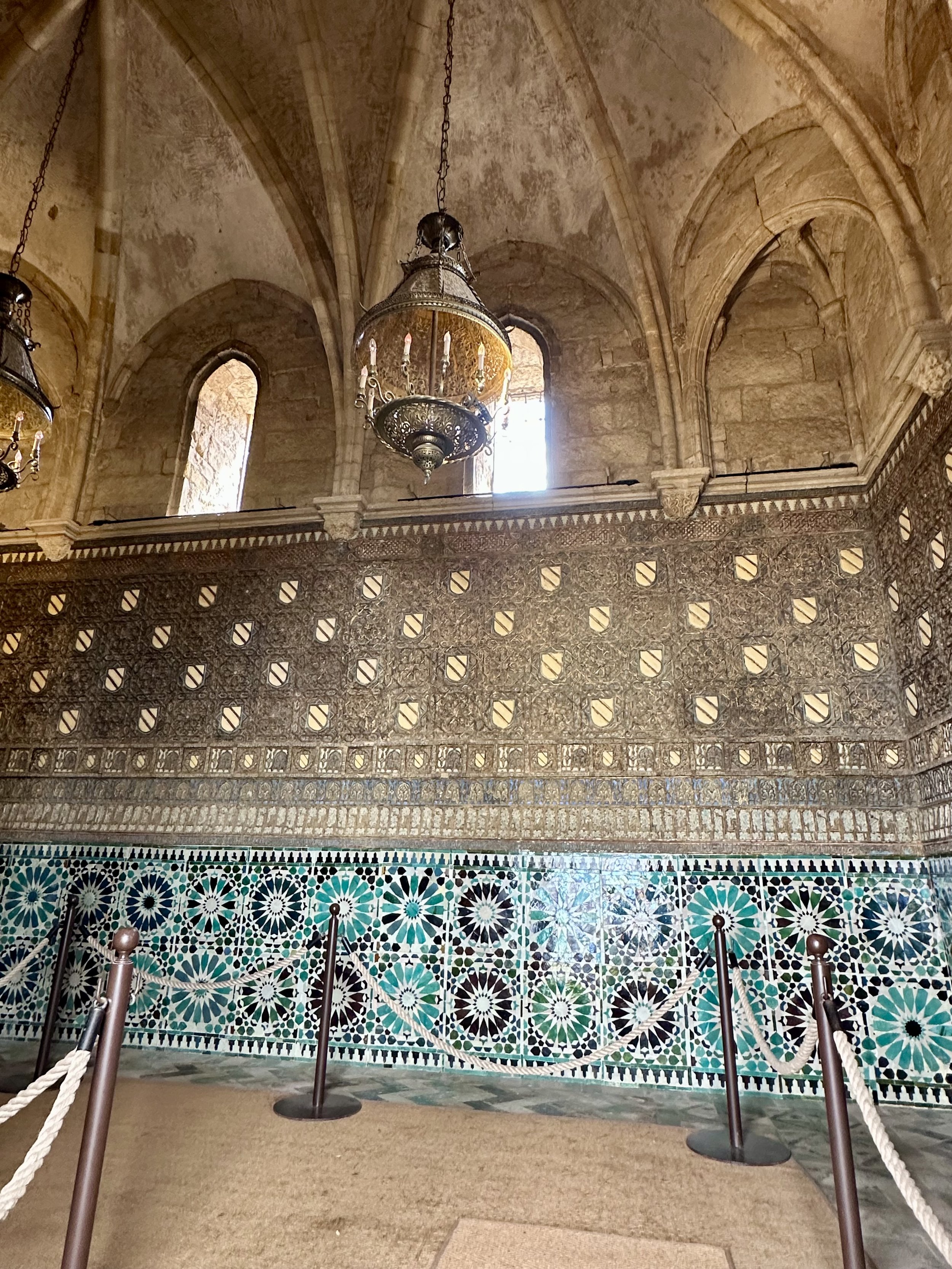
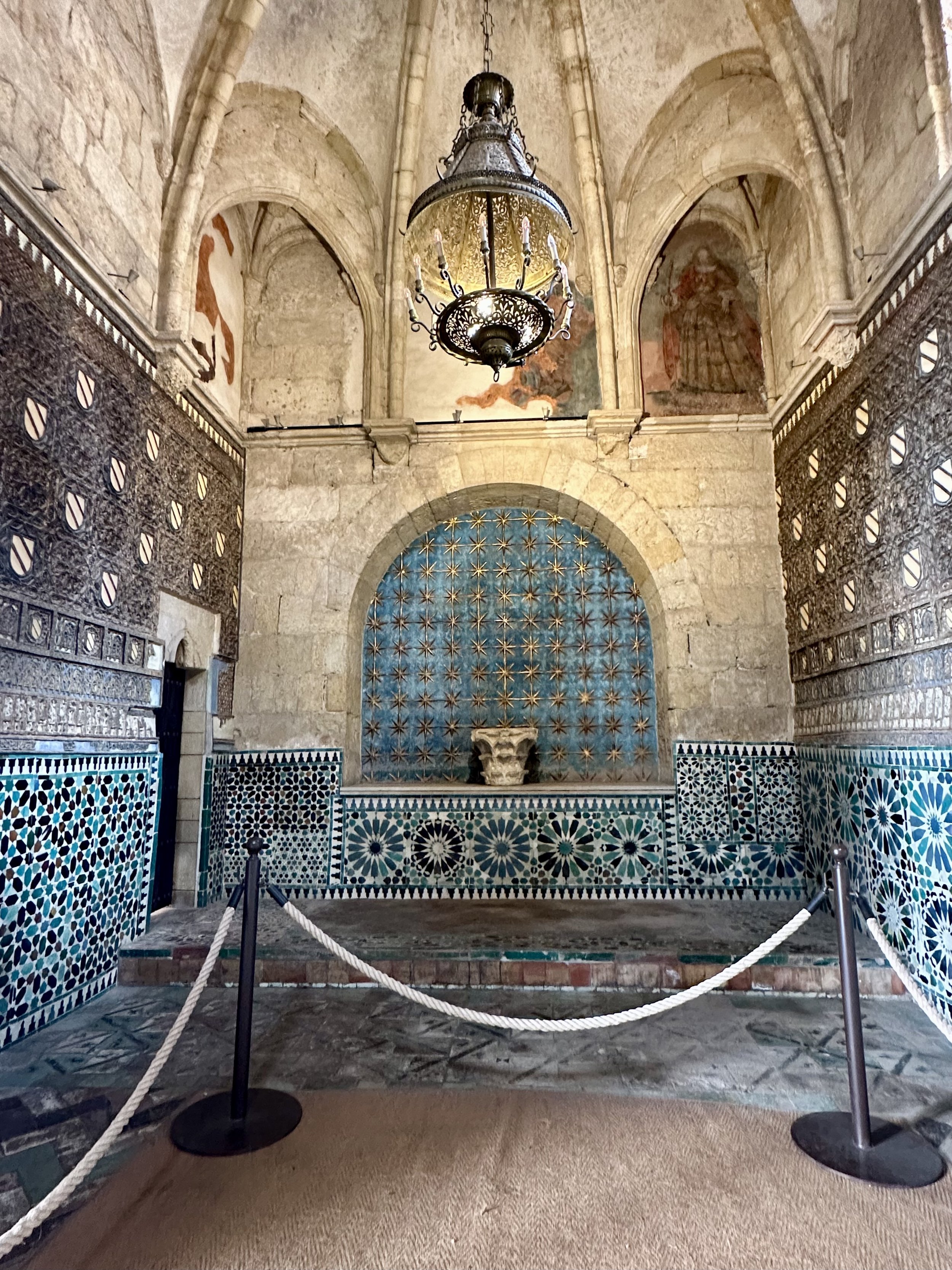
At this point we had planned to visit the synagogue nearby, but we were suddenly trapped in a narrow passageway, nearly crushed by a mob (well, a couple of large tour groups). My poor, tired brain unexpectedly shut down from the overwhelm. So we reversed course and walked back to our new favorite restaurant, Restaurante Regadera, on the bank of the Guadalquivir River. We had a relaxing and delicious lunch, complete with a fantastic “lemon” for dessert!

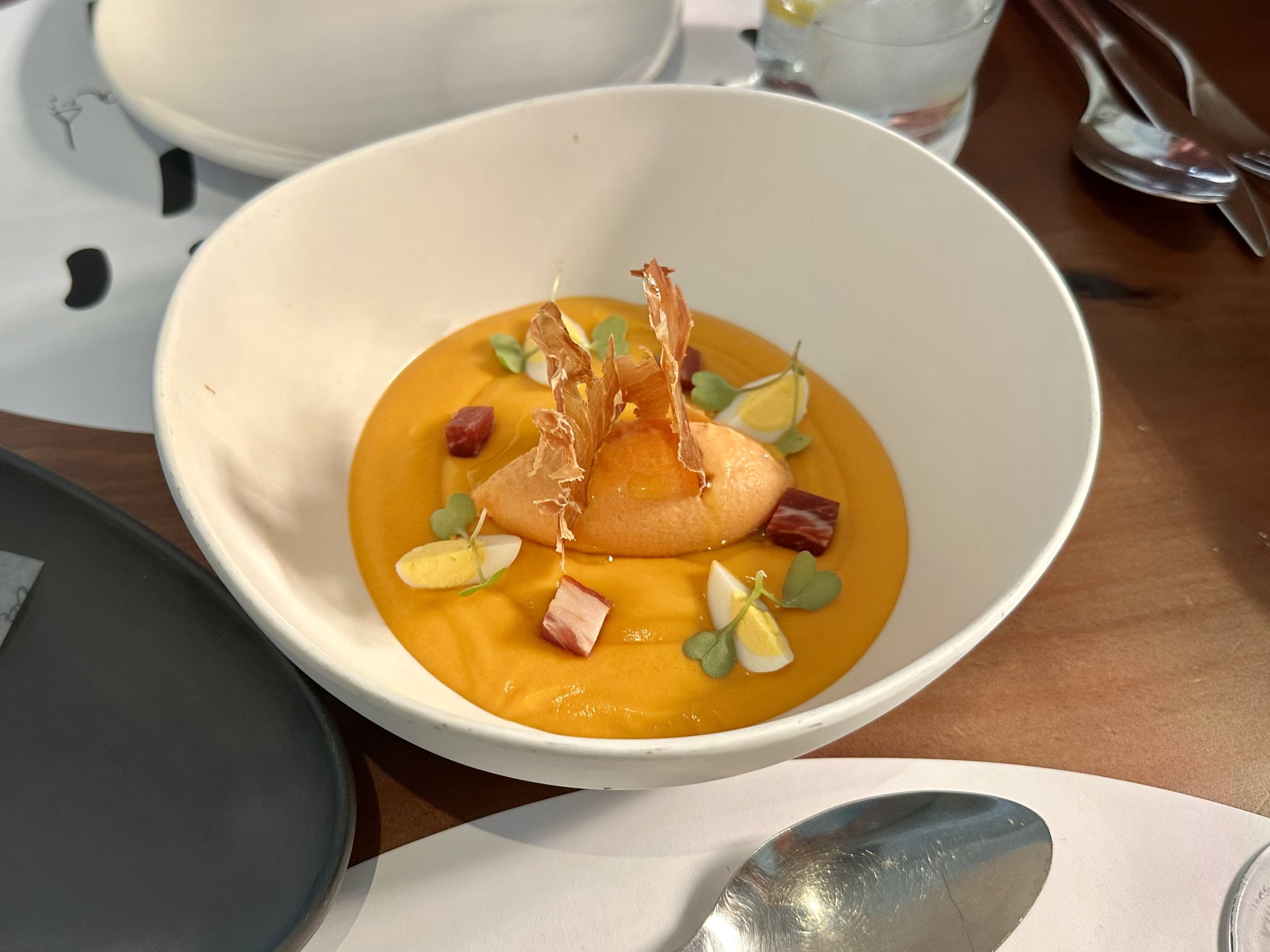
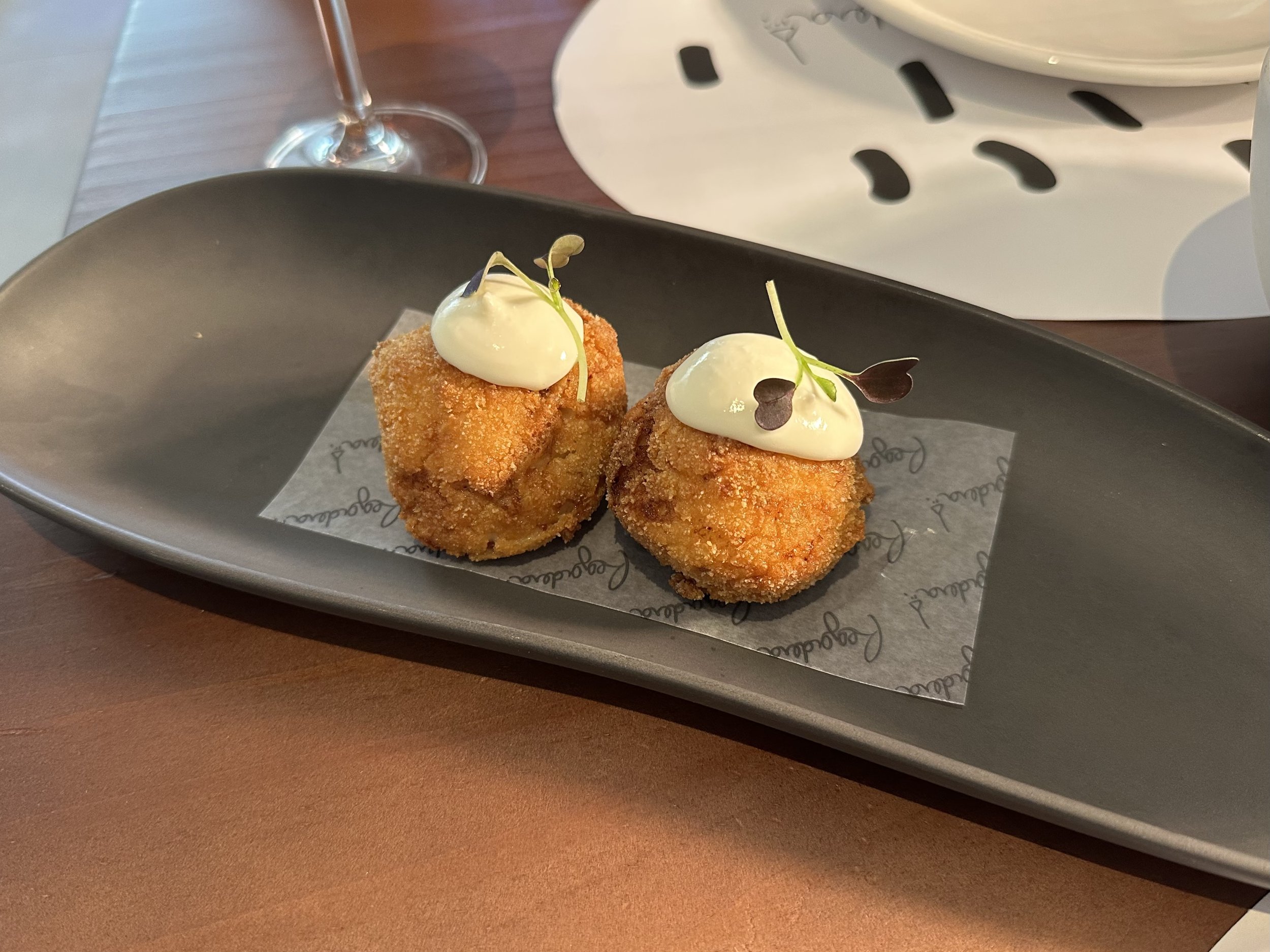

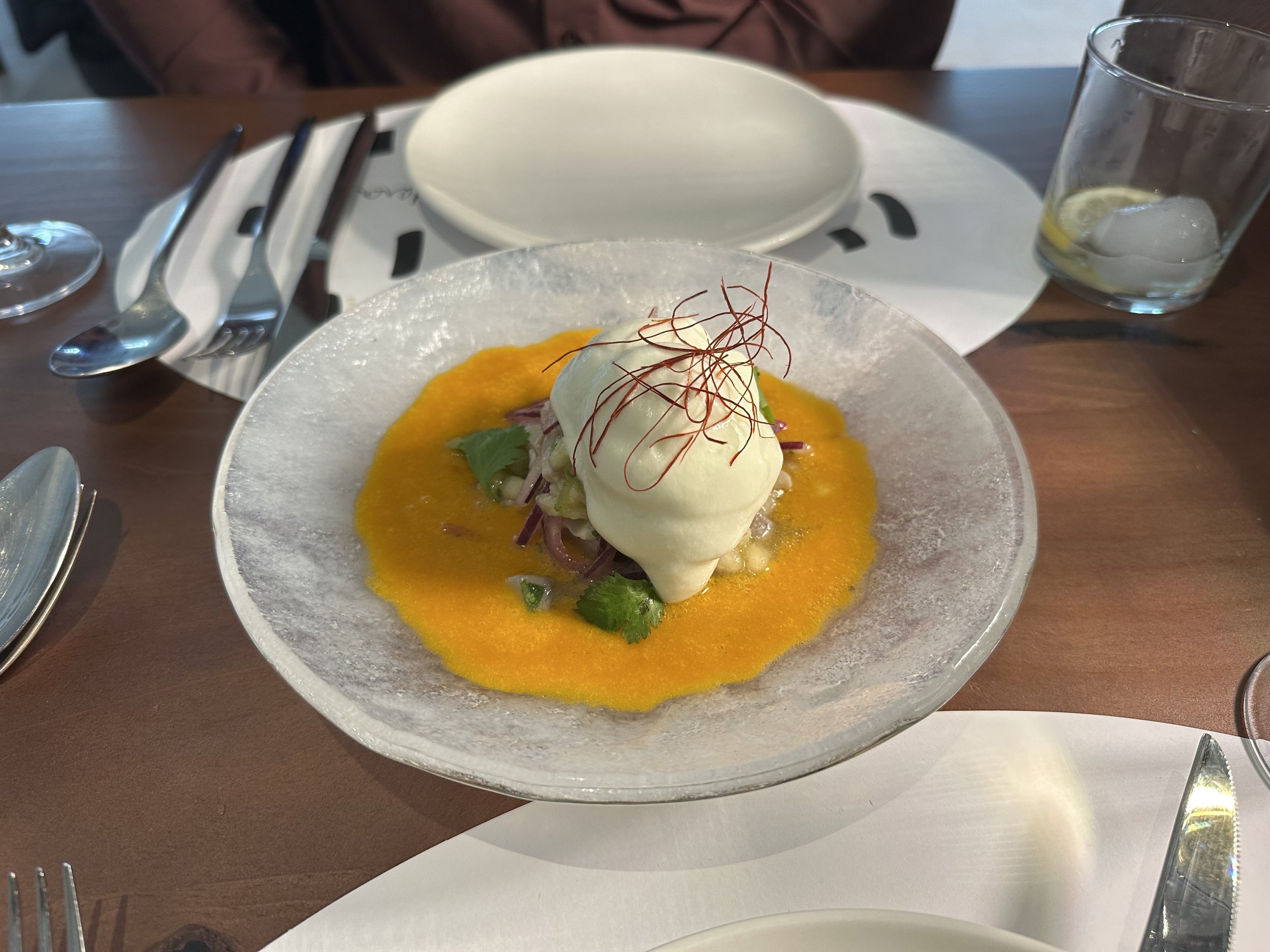
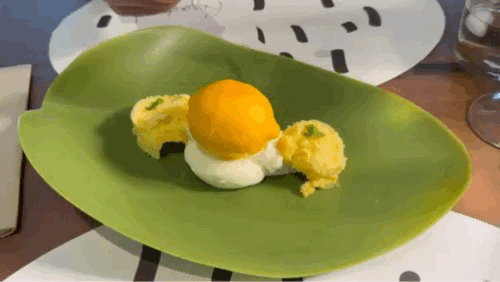
Fortified with good food and Caprichoso wine, we took a walk along the river, past the Roman Bridge, an old water wheel, the outer walls of the Alcázar de los Reyes Cristianos, and the old city walls with their turrets.
We re-entered the Jewish Quarter and were relieved to see that there were no more tour groups. We walked past the Statue of Maimonides, a famous Jewish scholar, rabbi, and polymath who was born in Córdoba. We stopped to see the Cordoba Synagogue, one of only three surviving medieval synagogues in Spain (we had visited the other two in Toledo). There were intricate plaster Mudéjar decorations, similar to those in Toledo. It was rather small, and thought to have been the private synagogue of a wealthy person. Placards translated the Hebrew inscriptions, many of which were from the Book of Psalms.
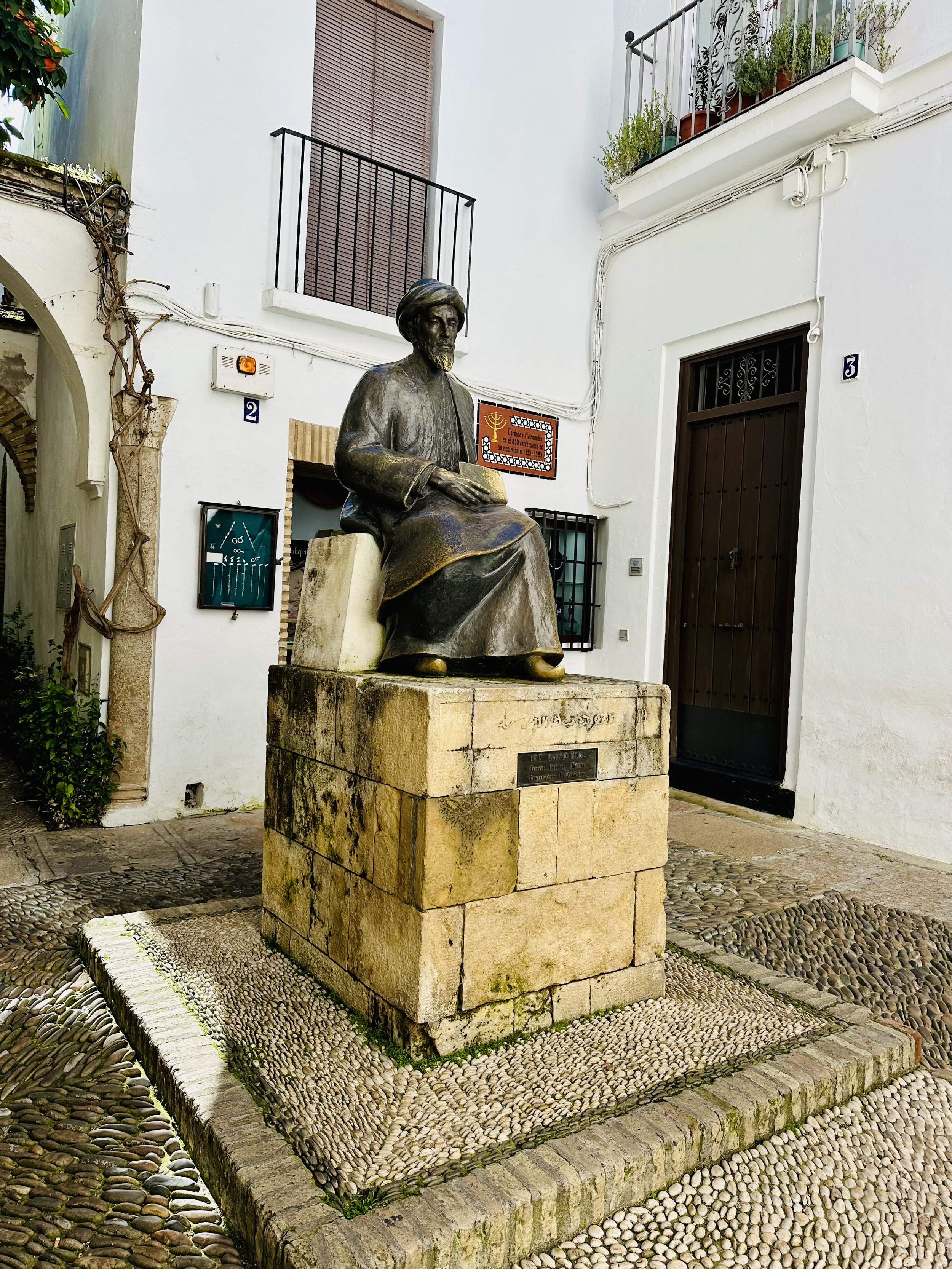
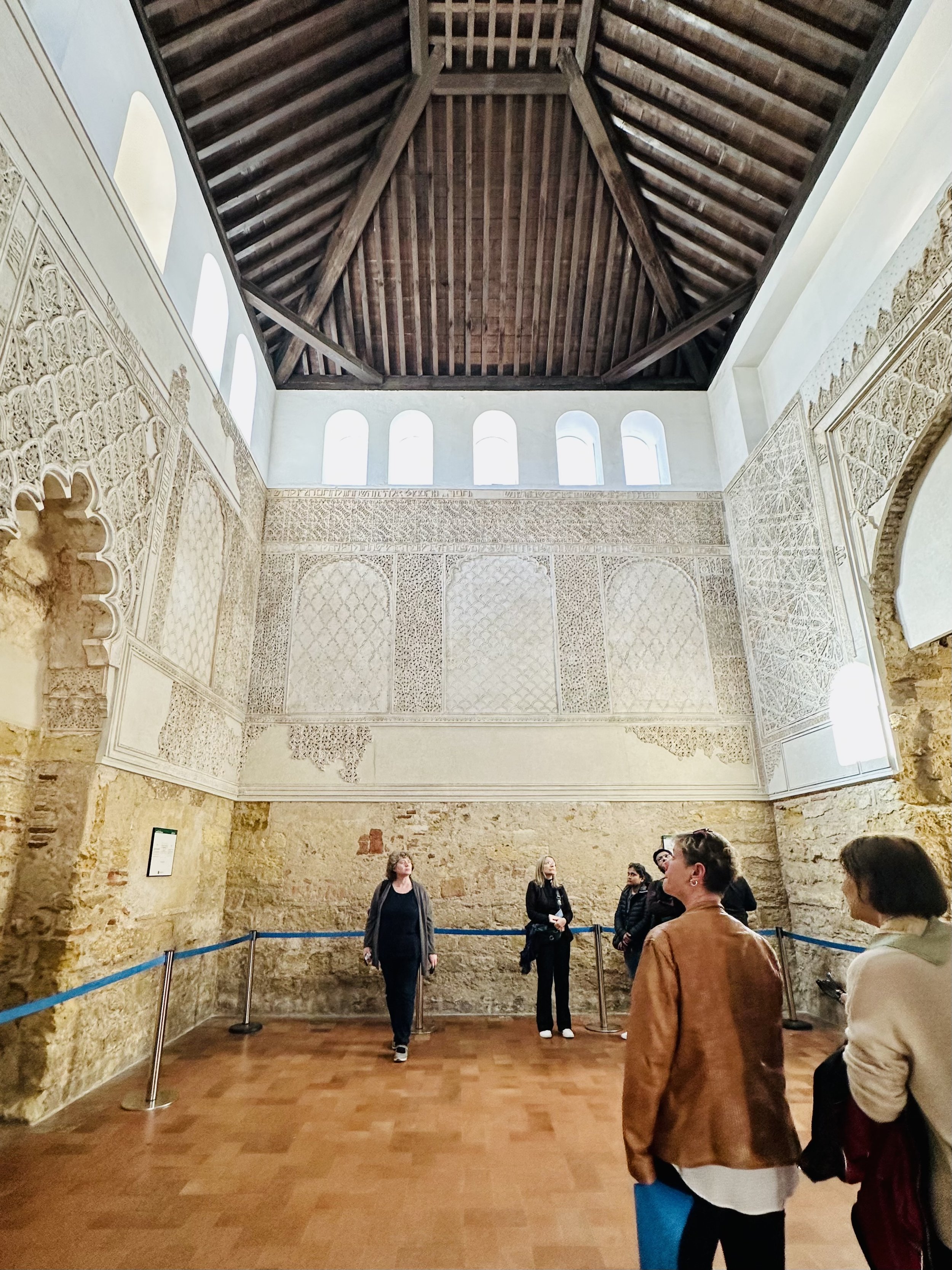
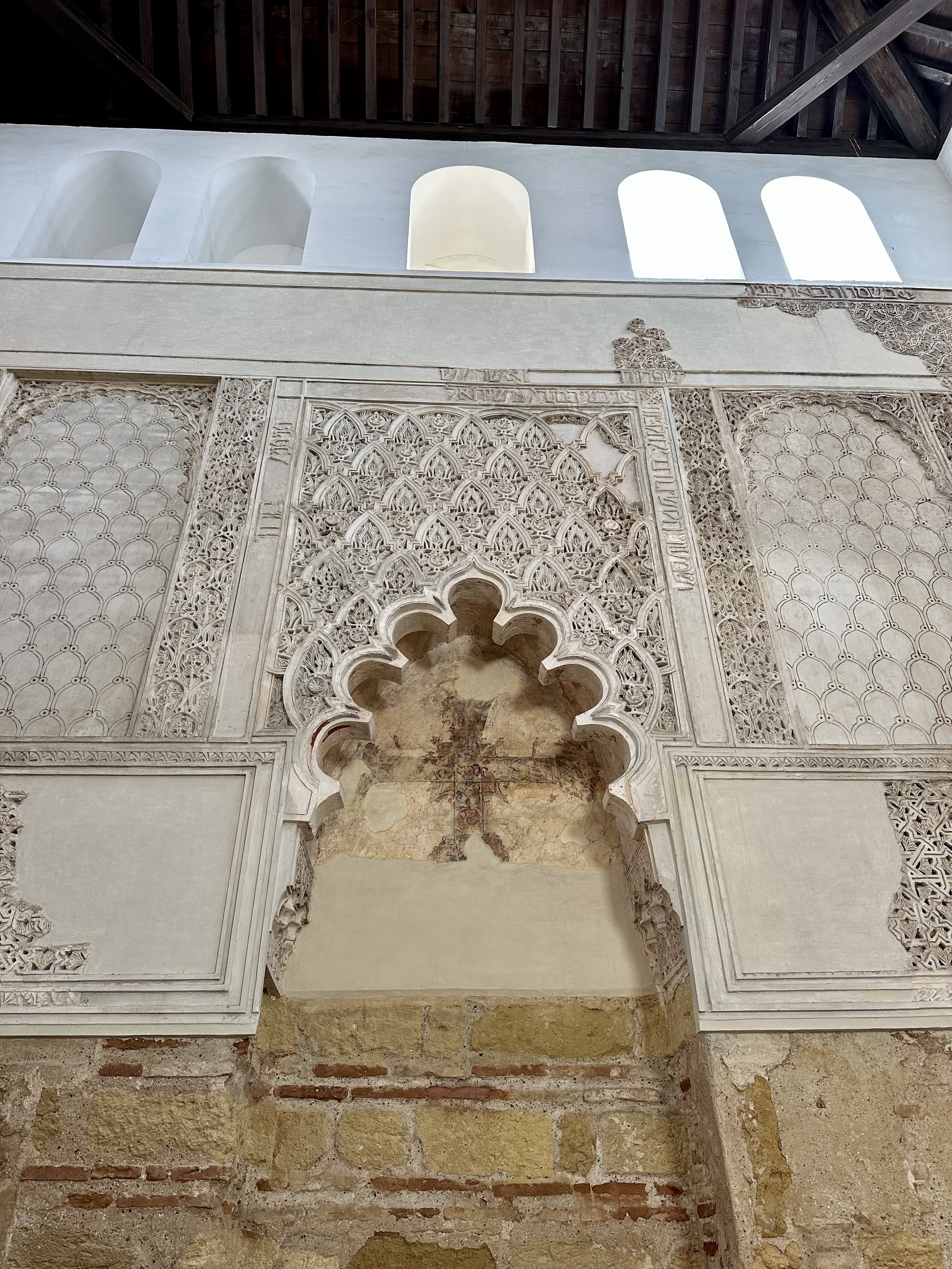
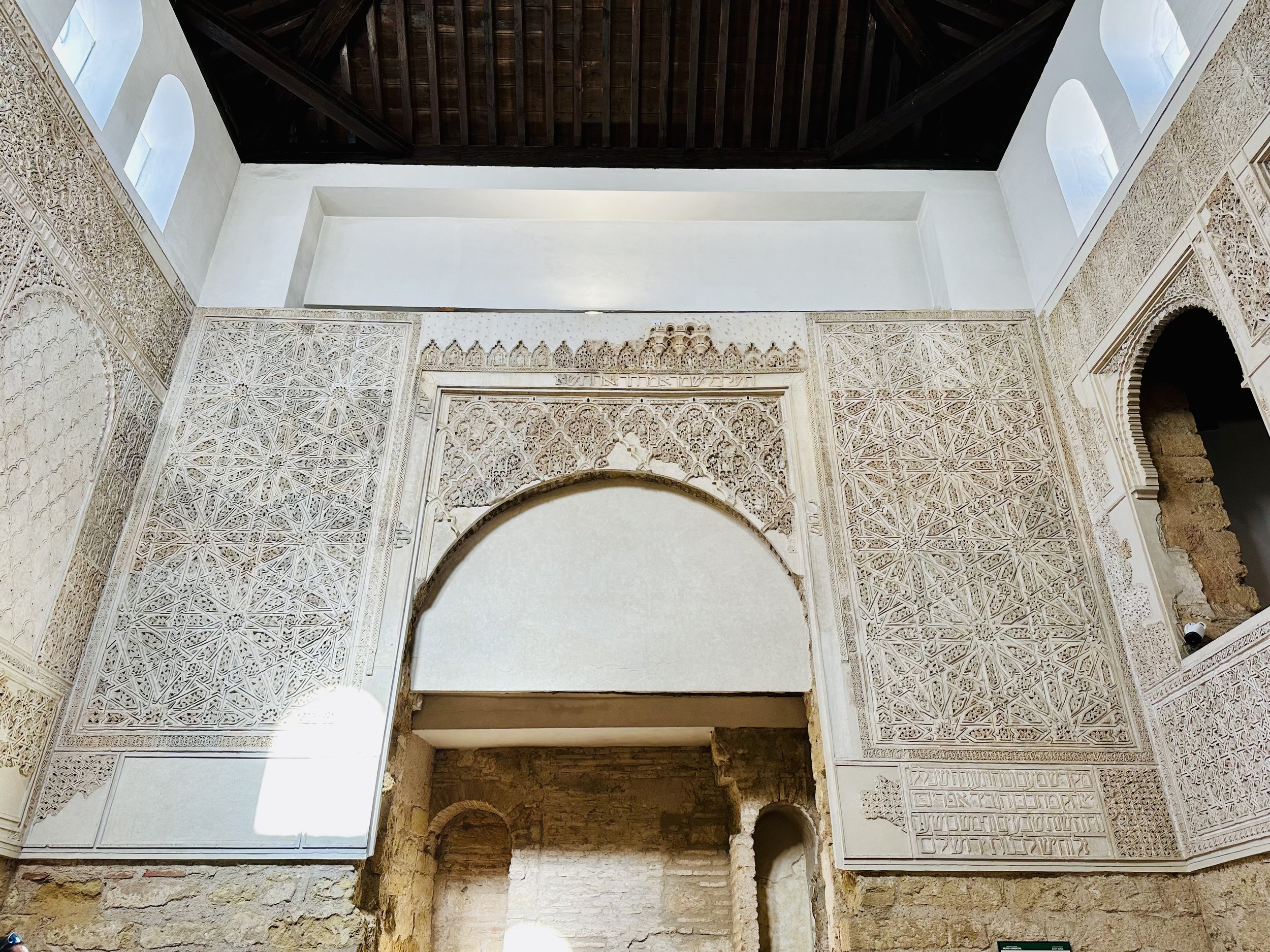
It was early evening, and time to catch our train back to Seville. On the way, we spotted a rainbow, a lovely finish to our visit to Córdoba.
